544 papers:
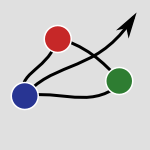 HT-2015-DimitrovSHS #design #user interface
HT-2015-DimitrovSHS #design #user interface- The Role of Structural Information for Designing Navigational User Interfaces (DD, PS, DH, MS), pp. 59–68.
 ITiCSE-2015-Cukierman #learning #predict #process #student
ITiCSE-2015-Cukierman #learning #predict #process #student- Predicting Success in University First Year Computing Science Courses: The Role of Student Participation in Reflective Learning Activities and in I-clicker Activities (DC), pp. 248–253.
 ITiCSE-2015-WangMSLCW #data access #education #named #using #visualisation
ITiCSE-2015-WangMSLCW #data access #education #named #using #visualisation- RBACvisual: A Visualization Tool for Teaching Access Control using Role-based Access Control (MW, JM, CKS, TL, SC, CW), pp. 141–146.
 ICPC-2015-HillSP #evaluation #feature model
ICPC-2015-HillSP #evaluation #feature model- Exploring the use of concern element role information in feature location evaluation (EH, DCS, LLP), pp. 140–150.
 ICSME-2015-NucciPSBOL #debugging #developer #on the #predict
ICSME-2015-NucciPSBOL #debugging #developer #on the #predict- On the role of developer’s scattered changes in bug prediction (DDN, FP, SS, GB, RO, ADL), pp. 241–250.
 MSR-2015-KouroshfarMBXMC #architecture #case study #evolution #quality
MSR-2015-KouroshfarMBXMC #architecture #case study #evolution #quality- A Study on the Role of Software Architecture in the Evolution and Quality of Software (EK, MM, HB, LX, SM, YC), pp. 246–257.
 ICALP-v2-2015-Charron-BostFN #algorithm #approximate #network
ICALP-v2-2015-Charron-BostFN #algorithm #approximate #network- Approximate Consensus in Highly Dynamic Networks: The Role of Averaging Algorithms (BCB, MF, TN), pp. 528–539.
 CHI-2015-HarteveldS #education #game studies #performance
CHI-2015-HarteveldS #education #game studies #performance- The Goal of Scoring: Exploring the Role of Game Performance in Educational Games (CH, SCS), pp. 2235–2244.
 CHI-2015-MarlowDF #design #online #process #quality
CHI-2015-MarlowDF #design #online #process #quality- Exploring the Role of Activity Trace Design on Evaluations of Online Worker Quality (JM, LAD, JLF), pp. 1617–1620.
 CHI-2015-MasdenE #community #comprehension #online
CHI-2015-MasdenE #community #comprehension #online- Understanding the Role of Community in Online Dating (CAM, WKE), pp. 535–544.
 CHI-2015-MaurielloNF #automation #comprehension #energy
CHI-2015-MaurielloNF #automation #comprehension #energy- Understanding the Role of Thermography in Energy Auditing: Current Practices and the Potential for Automated Solutions (MLM, LN, JEF), pp. 1993–2002.
 CHI-2015-SutherlandHY #automation #predict
CHI-2015-SutherlandHY #automation #predict- The Role of Environmental Predictability and Costs in Relying on Automation (SCS, CH, MEY), pp. 2535–2544.
 CSCW-2015-ArazyONYB #functional #wiki
CSCW-2015-ArazyONYB #functional #wiki- Functional Roles and Career Paths in Wikipedia (OA, FO, ON, MLY, AB), pp. 1092–1105.
 CSCW-2015-DasKDH #security #social
CSCW-2015-DasKDH #security #social- The Role of Social Influence in Security Feature Adoption (SD, ADIK, LAD, JIH), pp. 1416–1426.
 CSCW-2015-FreemanBBH #game studies #gender #online #simulation
CSCW-2015-FreemanBBH #game studies #gender #online #simulation- Simulating Marriage: Gender Roles and Emerging Intimacy in an Online Game (GF, JB, SB, SCH), pp. 1191–1200.
 CSCW-2015-KimL #comprehension #mobile
CSCW-2015-KimL #comprehension #mobile- Dwelling Places in KakaoTalk: Understanding the Roles and Meanings of Chatrooms in Mobile Instant Messengers (DjK, YKL), pp. 775–784.
 CSCW-2015-KusunokiS #design
CSCW-2015-KusunokiS #design- Designing for Temporal Awareness: The Role of Temporality in Time-Critical Medical Teamwork (DSK, AS), pp. 1465–1476.
 CSCW-2015-LeeL #behaviour #comprehension #health #multi #social
CSCW-2015-LeeL #behaviour #comprehension #health #multi #social- Understanding the Roles and Influences of Mediators from Multiple Social Channels for Health Behavior Change (YL, YKL), pp. 1070–1079.
 DHM-EH-2015-RegazzoniRC #simulation
DHM-EH-2015-RegazzoniRC #simulation- The Role of Virtual Ergonomic Simulation to Develop Innovative Human Centered Products (DR, CR, GC), pp. 74–83.
 HCI-UC-2015-Sorum #quality
HCI-UC-2015-Sorum #quality- The Role of Quality in Websites: A Discussion Focusing on Public Versus Private Sector Organizations (HS), pp. 92–101.
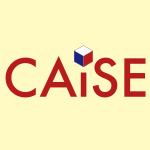 CAiSE-2015-HarmanBJRK #elicitation #memory management #process
CAiSE-2015-HarmanBJRK #elicitation #memory management #process- Virtual Business Role-Play: Leveraging Familiar Environments to Prime Stakeholder Memory During Process Elicitation (JH, RB, DJ, SRM, UK), pp. 166–180.
 ICEIS-v2-2015-Boon-itt #quality #self
ICEIS-v2-2015-Boon-itt #quality #self- Managing Service Quality of Self-Service Technologies to Enhance e-Satisfaction in Digital Banking Context — The Roles of Technology Readiness and Perceived Value (SBi), pp. 602–609.
 KDD-2015-HanT #community #network #probability #social
KDD-2015-HanT #community #network #probability #social- Probabilistic Community and Role Model for Social Networks (YH, JT), pp. 407–416.
 RecSys-2015-Guy #personalisation #recommendation
RecSys-2015-Guy #personalisation #recommendation- The Role of User Location in Personalized Search and Recommendation (IG), p. 236.
 REFSQ-2015-GramaticaLMPT #assessment #empirical #risk management #security
REFSQ-2015-GramaticaLMPT #assessment #empirical #risk management #security- The Role of Catalogues of Threats and Security Controls in Security Risk Assessment: An Empirical Study with ATM Professionals (MdG, KL, FM, FP, AT), pp. 98–114.
 SAC-2015-RaniseTV #analysis #automation #constraints #policy
SAC-2015-RaniseTV #analysis #automation #constraints #policy- Automated analysis of RBAC policies with temporal constraints and static role hierarchies (SR, ATT, LV), pp. 2177–2184.
 ESEC-FSE-2015-CasalnuovoVDF #developer #experience #git #social
ESEC-FSE-2015-CasalnuovoVDF #developer #experience #git #social- Developer onboarding in GitHub: the role of prior social links and language experience (CC, BV, PTD, VF), pp. 817–828.
 ICSE-v2-2015-BarnBR #on the #re-engineering
ICSE-v2-2015-BarnBR #on the #re-engineering- On the Role of Value Sensitive Concerns in Software Engineering Practice (BSB, RB, FR), pp. 497–500.
 ICSE-v2-2015-NewmanFSFFW #design #physics #prototype #re-engineering #social
ICSE-v2-2015-NewmanFSFFW #design #physics #prototype #re-engineering #social- The Role of Design Thinking and Physical Prototyping in Social Software Engineering (PN, MAF, WS, SF, AF, JW), pp. 487–496.
 SLE-2015-KuehnBGA #formal method #relational
SLE-2015-KuehnBGA #formal method #relational- A combined formal model for relational context-dependent roles (TK, SB, SG, UA), pp. 113–124.
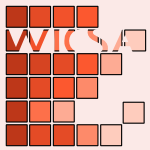 WICSA-2014-BiancoMKR #bound #case study #ecosystem #framework
WICSA-2014-BiancoMKR #bound #case study #ecosystem #framework- The Role of Platform Boundary Resources in Software Ecosystems: A Case Study (VdB, VM, MK, MR), pp. 11–20.
 ICSME-2014-BhattacharyaNF #approach #developer #graph
ICSME-2014-BhattacharyaNF #approach #developer #graph- Determining Developers’ Expertise and Role: A Graph Hierarchy-Based Approach (PB, IN, MF), pp. 11–20.
 ICALP-v1-2014-BavarianGI #communication #on the
ICALP-v1-2014-BavarianGI #communication #on the- On the Role of Shared Randomness in Simultaneous Communication (MB, DG, TI), pp. 150–162.
 CHI-2014-MatthewsGD #design
CHI-2014-MatthewsGD #design- Taking part: role-play in the design of therapeutic systems (MM, GG, GD), pp. 643–652.
 CHI-2014-ScissorsRG #self
CHI-2014-ScissorsRG #self- Room for interpretation: the role of self-esteem and CMC in romantic couple conflict (LES, MER, DG), pp. 3953–3962.
 CHI-2014-Smith #analysis #comprehension #game studies #generative
CHI-2014-Smith #analysis #comprehension #game studies #generative- Understanding procedural content generation: a design-centric analysis of the role of PCG in games (GS), pp. 917–926.
 CHI-2014-SunBNR #clustering #interactive
CHI-2014-SunBNR #clustering #interactive- The role of interactive biclusters in sensemaking (MS, LB, CLN, NR), pp. 1559–1562.
 CHI-2014-VinesDDWO #design #experience
CHI-2014-VinesDDWO #design #experience- Experience design theatre: exploring the role of live theatre in scaffolding design dialogues (JV, TDC, PD, PCW, PO), pp. 683–692.
 CHI-2014-VinesDM
CHI-2014-VinesDM- Pay or delay: the role of technology when managing a low income (JV, PD, AM), pp. 501–510.
 CHI-2014-YueLCSBGSZ #experience #research
CHI-2014-YueLCSBGSZ #experience #research- Photographing information needs: the role of photos in experience sampling method-style research (ZY, EL, CJC, JS, KB, ZG, NS, G(Z), pp. 1545–1554.
 CSCW-2014-HuiGG #community #comprehension
CSCW-2014-HuiGG #community #comprehension- Understanding the role of community in crowdfunding work (JH, MDG, EG), pp. 62–74.
 CSCW-2014-JohriS #framework
CSCW-2014-JohriS #framework- The role of data in aligning the “unique identity” infrastructure in India (AJ, JS), pp. 697–709.
 CSCW-2014-KrautF #online
CSCW-2014-KrautF #online- The role of founders in building online groups (REK, ATF), pp. 722–732.
 CSCW-2014-SaidBHK #facebook
CSCW-2014-SaidBHK #facebook- Framing the conversation: the role of facebook conversations in shopping for eyeglasses (KS, MAB, AH, SKK), pp. 652–661.
 DUXU-DI-2014-AlmutairiR #interface
DUXU-DI-2014-AlmutairiR #interface- The Role of Avatars in e-Government Interfaces (BA, DR), pp. 28–37.
 HCI-AIMT-2014-KrogsagerSR #physics
HCI-AIMT-2014-KrogsagerSR #physics- Backchannel Head Nods in Danish First Meeting Encounters with a Humanoid Robot: The Role of Physical Embodiment (AK, NS, MR), pp. 651–662.
 HCI-AS-2014-MoserF #branch #experience #feedback #game studies
HCI-AS-2014-MoserF #branch #experience #feedback #game studies- Narrative Control and Player Experience in Role Playing Games: Decision Points and Branching Narrative Feedback (CM, XF), pp. 622–633.
 HCI-TMT-2014-LizanoS #comprehension #developer #towards #usability
HCI-TMT-2014-LizanoS #comprehension #developer #towards #usability- Improvement of Novice Software Developers’ Understanding about Usability: The Role of Empathy Toward Users as a Case of Emotional Contagion (FL, JS), pp. 207–218.
 LCT-TRE-2014-LorenzKL #education #implementation
LCT-TRE-2014-LorenzKL #education #implementation- The Role of Educational Technologist in Implementing New Technologies at School (BL, KK, ML), pp. 288–296.
 SCSM-2014-FawziS #gender #network #online #social
SCSM-2014-FawziS #gender #network #online #social- An Investigation into Gender Role Conformity in an Online Social Networking Environment (AF, AS), pp. 322–330.
 SCSM-2014-SakamotoN #game studies #hybrid #process #social #social media
SCSM-2014-SakamotoN #game studies #hybrid #process #social #social media- Gamifying Social Media to Encourage Social Activities with Digital-Physical Hybrid Role-Playing (MS, TN), pp. 581–591.
 EDOC-2014-FrancescomarinoRGV #modelling #process #semantics
EDOC-2014-FrancescomarinoRGV #modelling #process #semantics- The Role of Semantic Annotations in Business Process Modelling (CDF, MR, CG, AV), pp. 181–189.
 ICEIS-v3-2014-CrickC #comprehension
ICEIS-v3-2014-CrickC #comprehension- Understanding the Role of Business — IT Alignment in Organisational Agility (CC, EC), pp. 459–464.
 KMIS-2014-SmirnovS #implementation #information management #lessons learnt
KMIS-2014-SmirnovS #implementation #information management #lessons learnt- Role-Driven Knowledge Management Implementation — Lessons Learned (AVS, NS), pp. 36–43.
 RecSys-2014-Nguyen #lifecycle #recommendation
RecSys-2014-Nguyen #lifecycle #recommendation- Improving recommender systems: user roles and lifecycles (TTN), pp. 417–420.
 SEKE-2014-ChenM #abstraction #evolution
SEKE-2014-ChenM #abstraction #evolution- Change and Role as First-Class Abstractions for Realising Dynamic Evolution (YC, XM), pp. 443–446.
 SIGIR-2014-ChenGLH #topic #twitter
SIGIR-2014-ChenGLH #topic #twitter- Inferring topic-dependent influence roles of Twitter users (CC, DG, WL, YH), pp. 1203–1206.
 SIGIR-2014-HuangTK #distance #network #people
SIGIR-2014-HuangTK #distance #network #people- The role of network distance in linkedin people search (SWH, DT, KK), pp. 867–870.
 SIGIR-2014-YaoHHZ #modelling #recommendation #trust
SIGIR-2014-YaoHHZ #modelling #recommendation #trust- Modeling dual role preferences for trust-aware recommendation (WY, JH, GH, YZ), pp. 975–978.
 MoDELS-2014-VaupelTHSGG #development #mobile #modelling
MoDELS-2014-VaupelTHSGG #development #mobile #modelling- Model-Driven Development of Mobile Applications Allowing Role-Driven Variants (SV, GT, JPH, RS, RG, MG), pp. 1–17.
 MoDELS-2014-VaupelTHSGG #development #mobile #modelling
MoDELS-2014-VaupelTHSGG #development #mobile #modelling- Model-Driven Development of Mobile Applications Allowing Role-Driven Variants (SV, GT, JPH, RS, RG, MG), pp. 1–17.
 RE-2014-Daneva #approach #game studies #how #multi #online #requirements
RE-2014-Daneva #approach #game studies #how #multi #online #requirements- How practitioners approach gameplay requirements? An exploration into the context of massive multiplayer online role-playing games (MD), pp. 3–12.
 RE-2014-GordonB #requirements
RE-2014-GordonB #requirements- The role of legal expertise in interpretation of legal requirements and definitions (DGG, TDB), pp. 273–282.
 SLE-2014-HarkesV #modelling #navigation
SLE-2014-HarkesV #modelling #navigation- Unifying and Generalizing Relations in Role-Based Data Modeling and Navigation (DH, EV), pp. 241–260.
 SLE-2014-KuhnLGSA #metamodelling #modelling #product line #programming language
SLE-2014-KuhnLGSA #metamodelling #modelling #product line #programming language- A Metamodel Family for Role-Based Modeling and Programming Languages (TK, ML, SG, CS, UA), pp. 141–160.
 CAV-2014-FerraraMNP #data access #named #policy #verification
CAV-2014-FerraraMNP #data access #named #policy #verification- Vac — Verifier of Administrative Role-Based Access Control Policies (ALF, PM, TLN, GP), pp. 184–191.
 LICS-CSL-2014-BarceloM #combinator #graph #logic #word
LICS-CSL-2014-BarceloM #combinator #graph #logic #word- Graph logics with rational relations: the role of word combinatorics (PB, PM), p. 10.
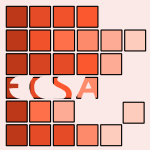 ECSA-2013-AmellerGAF #architecture #bibliography #quality
ECSA-2013-AmellerGAF #architecture #bibliography #quality- The Role of Quality Attributes in Service-Based Systems Architecting: A Survey (DA, MG, PA, XF), pp. 200–207.
 DAC-2013-GrossmanTBS #design #framework #simulation
DAC-2013-GrossmanTBS #design #framework #simulation- The role of cascade, a cycle-based simulation infrastructure, in designing the anton special-purpose supercomputers (JPG, BT, JAB, DES), p. 9.
 DAC-2013-WangYRNZMMB #design #grid #power management
DAC-2013-WangYRNZMMB #design #grid #power management- Role of power grid in side channel attack and power-grid-aware secure design (XW, WY, DBR, SN, YZ, SM, DM, SB), p. 9.
 DATE-2013-GhaidaG #design #development #multi #process
DATE-2013-GhaidaG #design #development #multi #process- Role of design in multiple patterning: technology development, design enablement and process control (RSG, PG), pp. 314–319.
 TACAS-2013-FerraraMP #analysis #data access #policy #self
TACAS-2013-FerraraMP #analysis #data access #policy #self- Policy Analysis for Self-administrated Role-Based Access Control (ALF, PM, GP), pp. 432–447.
 ICSM-2013-HillSPV
ICSM-2013-HillSPV- Differentiating Roles of Program Elements in Action-Oriented Concerns (EH, DS, LLP, KVS), pp. 376–379.
 MSR-2013-Squire #dataset
MSR-2013-Squire #dataset- Project roles in the apache software foundation: a dataset (MS), pp. 301–304.
 CHI-2013-Erete #perspective
CHI-2013-Erete #perspective- Protecting the home: exploring the roles of technology and citizen activism from a burglar’s perspective (SLE), pp. 2507–2516.
 CHI-2013-GustafsonRB #comprehension #interface #visual notation
CHI-2013-GustafsonRB #comprehension #interface #visual notation- Understanding palm-based imaginary interfaces: the role of visual and tactile cues when browsing (SG, BR, PB), pp. 889–898.
 CHI-2013-ParkBN
CHI-2013-ParkBN- The roles of touch during phone conversations: long-distance couples’ use of POKE in their homes (YP, KMB, TJN), pp. 1679–1688.
 CHI-2013-Yarosh
CHI-2013-Yarosh- Shifting dynamics or breaking sacred traditions?: the role of technology in twelve-step fellowships (SY), pp. 3413–3422.
 CSCW-2013-Barlow #chat #using
CSCW-2013-Barlow #chat #using- Emergent roles in decision-making tasks using group chat (JBB), pp. 1505–1514.
 CSCW-2013-DimondDLB #exclamation #online #social
CSCW-2013-DimondDLB #exclamation #online #social- Hollaback!: the role of storytelling online in a social movement organization (JPD, MD, DL, AB), pp. 477–490.
 CSCW-2013-GopalakrishnanHB #distributed #network #similarity
CSCW-2013-GopalakrishnanHB #distributed #network #similarity- Voluntary turnover in a distributed work setting: an examination of the role of spatial propinquity and role similarity in project affiliation networks (GMG, DSH, SPB), pp. 329–340.
 DUXU-NTE-2013-CombeHD #design #people #self #usability
DUXU-NTE-2013-CombeHD #design #people #self #usability- Designing Technology for Older People — The Role of Technical Self-confidence in Usability of an Inclusive Heating Control (NC, DH, HD), pp. 49–56.
 DUXU-PMT-2013-SilvaSMP #agile #comprehension #design #user interface
DUXU-PMT-2013-SilvaSMP #agile #comprehension #design #user interface- Understanding the UX Designer’s Role within Agile Teams (TSdS, MSS, CdOM, LCP), pp. 599–609.
 DUXU-WM-2013-PropstSPJC #evaluation #knowledge-based #usability
DUXU-WM-2013-PropstSPJC #evaluation #knowledge-based #usability- From the Ground-Up: Role of Usability and Aesthetics Evaluation in Creating a Knowledge-Based Website for the U.S. Army Corps of Engineers (DBP, SJS, GLP, EJ, CKC), pp. 274–283.
 HCI-AS-2013-JohnsonOVYP #adaptation
HCI-AS-2013-JohnsonOVYP #adaptation- Examining the Role of Contextual Exercises and Adaptive Expertise on CAD Model Creation Procedures (MDJ, EO, LV, BY, XP), pp. 408–417.
 HIMI-D-2013-KaoW #complexity
HIMI-D-2013-KaoW #complexity- The Right Level of Complexity in a Banner Ad: Roles of Construal Level and Fluency (CTK, MYW), pp. 604–613.
 HIMI-HSM-2013-EverardJM #mobile #product line
HIMI-HSM-2013-EverardJM #mobile #product line- Enabling Access to Healthy Food Alternatives for Low-Income Families: The Role of Mobile Technology (AE, BMJ, SM), pp. 245–251.
 HIMI-LCCB-2013-Takahashi13a
HIMI-LCCB-2013-Takahashi13a- Role of Assigned Persona for Computer Supported Cooperative Work in Remote Control Environment (YT), pp. 372–380.
 OCSC-2013-AllenS #case study #community
OCSC-2013-AllenS #case study #community- The Role of the Community in a Technical Support Community: A Case Study (DMA, TS), pp. 335–344.
 OCSC-2013-TokelC #communication #game studies #representation
OCSC-2013-TokelC #communication #game studies #representation- Communication and Avatar Representation during Role-Playing in Second Life Virtual World (STT, EC), pp. 210–215.
 CAiSE-2013-MethME #automation #elicitation #information management #requirements
CAiSE-2013-MethME #automation #elicitation #information management #requirements- Is Knowledge Power? The Role of Knowledge in Automated Requirements Elicitation (HM, AM, ME), pp. 578–593.
 ICEIS-v2-2013-RothPS #communication #social #social media
ICEIS-v2-2013-RothPS #communication #social #social media- Some Insights into the Role of Social Media in Political Communication (MR, GP, JS), pp. 351–360.
 CIKM-2013-GuoZ #classification #comprehension #empirical #graph #perspective
CIKM-2013-GuoZ #classification #comprehension #empirical #graph #perspective- Understanding the roles of sub-graph features for graph classification: an empirical study perspective (TG, XZ), pp. 817–822.
 KDD-2013-GilpinED #algorithm #framework #learning
KDD-2013-GilpinED #algorithm #framework #learning- Guided learning for role discovery (GLRD): framework, algorithms, and applications (SG, TER, IND), pp. 113–121.
 KDD-2013-WengRPGCBSMF #evolution #information management #network #social
KDD-2013-WengRPGCBSMF #evolution #information management #network #social- The role of information diffusion in the evolution of social networks (LW, JR, NP, BG, CC, FB, RS, FM, AF), pp. 356–364.
 KDD-2013-ZhaoWYLZ #network #social
KDD-2013-ZhaoWYLZ #network #social- Inferring social roles and statuses in social networks (YZ, GW, PSY, SL, SZ), pp. 695–703.
 SEKE-2013-DiaoSYG #automation #semantics
SEKE-2013-DiaoSYG #automation #semantics- A Semantic-based Semi-automated Role Mapping Mechanism (S) (LD, WS, ILY, JG), pp. 14–17.
 SIGIR-2013-Sappelli
SIGIR-2013-Sappelli- The role of current working context in professional search (MS), p. 1148.
 REFSQ-2013-Bennett-TherkildsenJNR #development #process #requirements
REFSQ-2013-Bennett-TherkildsenJNR #development #process #requirements- Redefinition of the Requirements Engineer Role in Mjølner’s Software Development Process (ABT, JBJ, KN, NMR), pp. 285–291.
 SAC-2013-BuarqueCA #modelling #requirements
SAC-2013-BuarqueCA #modelling #requirements- The role of NFRs when transforming i* requirements models into OO-method models (AB, JC, FMRA), pp. 1305–1306.
 ESEC-FSE-2013-BlincoeVD #coordination #dependence #identification
ESEC-FSE-2013-BlincoeVD #coordination #dependence #identification- Do all task dependencies require coordination? the role of task properties in identifying critical coordination needs in software projects (KB, GV, DD), pp. 213–223.
 ICSE-2013-DamianHKMK #communication #coordination
ICSE-2013-DamianHKMK #communication #coordination- The role of domain knowledge and cross-functional communication in socio-technical coordination (DD, RH, IK, SM, BK), pp. 442–451.
 ICSE-2013-OmoronyiaCSPN #adaptation #privacy #requirements
ICSE-2013-OmoronyiaCSPN #adaptation #privacy #requirements- Engineering adaptive privacy: on the role of privacy awareness requirements (IO, LC, MS, LP, BN), pp. 632–641.
 SPLC-2013-MuthigS #framework #product line
SPLC-2013-MuthigS #framework #product line- A framework for role-based feature management in software product line organizations (DM, JS), pp. 178–187.
 SPLC-2013-Taylor #architecture #ecosystem
SPLC-2013-Taylor #architecture #ecosystem- The role of architectural styles in successful software ecosystems (RNT), pp. 2–4.
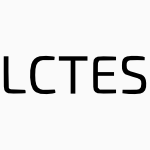 LCTES-2013-Beemster #c #manycore
LCTES-2013-Beemster #c #manycore- The role of C in the dark ages of multi-core (MB), pp. 89–90.
 CSEET-2012-ZuppiroliCG #game studies #product line #re-engineering
CSEET-2012-ZuppiroliCG #game studies #product line #re-engineering- A Role-Playing Game for a Software Engineering Lab: Developing a Product Line (SZ, PC, MG), pp. 13–22.
 ICPC-2012-RajlichW #comprehension #concept
ICPC-2012-RajlichW #comprehension #concept- A retrospective view on: The role of concepts in program comprehension: (MIP award) (VR, NW), pp. 12–13.
 CHI-2012-CoxCSC #challenge #experience #game studies
CHI-2012-CoxCSC #challenge #experience #game studies- Not doing but thinking: the role of challenge in the gaming experience (ALC, PAC, PS, MC), pp. 79–88.
 CHI-2012-MoncurBKT
CHI-2012-MoncurBKT- From death to final disposition: roles of technology in the post-mortem interval (WM, JB, EK, JT), pp. 531–540.
 CSCW-2012-ChiaC #security #web
CSCW-2012-ChiaC #security #web- Community-based web security: complementary roles of the serious and casual contributors (PHC, JC), pp. 1023–1032.
 CSCW-2012-JonesA #social
CSCW-2012-JonesA #social- We don’t need no stinkin’ badges: examining the social role of badges in the huffington post (JJ, NA), pp. 249–252.
 CSCW-2012-MassimiDD
CSCW-2012-MassimiDD- Finding a new normal: the role of technology in life disruptions (MM, JPD, CALD), pp. 719–728.
 CSCW-2012-ZhaoHG #community #how #online #people #self
CSCW-2012-ZhaoHG #community #how #online #people #self- How and to whom people share: the role of culture in self-disclosure in online communities (CZ, PJH, GG), pp. 67–76.
 CIKM-2012-YuR #identification #query
CIKM-2012-YuR #identification #query- Role-explicit query identification and intent role annotation (HY, FR), pp. 1163–1172.
 ECIR-2012-MantrachR #framework #multi #people #retrieval #social #social media
ECIR-2012-MantrachR #framework #multi #people #retrieval #social #social media- A General Framework for People Retrieval in Social Media with Multiple Roles (AM, JMR), pp. 512–516.
 KDD-2012-HendersonGETBAKFL #graph #mining #named #scalability
KDD-2012-HendersonGETBAKFL #graph #mining #named #scalability- RolX: structural role extraction & mining in large graphs (KH, BG, TER, HT, SB, LA, DK, CF, LL), pp. 1231–1239.
 KMIS-2012-RakthinCC #effectiveness
KMIS-2012-RakthinCC #effectiveness- More Effective Transfer of Competitor and Customer Intelligence — Mediating Roles of Common Knowledge Sharing and Source Credibility (SR, RJC, SC), pp. 251–256.
 KR-2012-PradeR #logic #predict #similarity
KR-2012-PradeR #logic #predict #similarity- Homogeneous Logical Proportions: Their Uniqueness and Their Role in Similarity-Based Prediction (HP, GR).
 SIGIR-2012-XuJW #community #recommendation
SIGIR-2012-XuJW #community #recommendation- Dual role model for question recommendation in community question answering (FX, ZJ, BW), pp. 771–780.
 SAC-2012-GiuntaPT12a #aspect-oriented #design pattern
SAC-2012-GiuntaPT12a #aspect-oriented #design pattern- Superimposing roles for design patterns into application classes by means of aspects (RG, GP, ET), pp. 1866–1868.
 SAC-2012-RajeDFRR #data access #implementation #ontology #using
SAC-2012-RajeDFRR #data access #implementation #ontology #using- Using ontology-based methods for implementing role-based access control in cooperative systems (SR, CD, MF, RR, JR), pp. 763–764.
 SAC-2012-Rittgen #collaboration #editing #modelling
SAC-2012-Rittgen #collaboration #editing #modelling- The role of editor in collaborative modeling (PR), pp. 1674–1679.
 SAC-2012-WangZHHZWT #mining #mobile #recommendation
SAC-2012-WangZHHZWT #mining #mobile #recommendation- Context-aware role mining for mobile service recommendation (JW, CZ, CH, LH, LZ, RKW, JT), pp. 173–178.
 LICS-2012-Constable #on the
LICS-2012-Constable #on the- On Building Constructive Formal Theories of Computation Noting the Roles of Turing, Church, and Brouwer (RLC), pp. 2–8.
 SAT-2012-BalintS #probability
SAT-2012-BalintS #probability- Choosing Probability Distributions for Stochastic Local Search and the Role of Make versus Break (AB, US), pp. 16–29.
 DATE-2011-AgarwalWG #comprehension
DATE-2011-AgarwalWG #comprehension- Understanding the role of buildings in a smart microgrid (YA, TW, RKG), pp. 1224–1229.
 CSEET-2011-BoehmBGHPST #education #re-engineering
CSEET-2011-BoehmBGHPST #education #re-engineering- Panel on the role of graduate software and systems engineering bodies of knowledge in formulating graduate software engineering curricula (BWB, PB, DG, TBH, ABP, MMS, JBT), pp. 535–536.
 ITiCSE-2011-BackCMM #case study #modelling #student #using
ITiCSE-2011-BackCMM #case study #modelling #student #using- A study in engaging female students in computer science using role models (JB, PC, CM, PWM), pp. 63–67.
 SCAM-J-2009-PhalpAJVK11 #case study #comprehension #requirements
SCAM-J-2009-PhalpAJVK11 #case study #comprehension #requirements- The role of comprehension in requirements and implications for use case descriptions (KP, AA, SJ, JV, JMK), pp. 461–486.
 SEFM-2011-Sanchez #using
SEFM-2011-Sanchez #using- Using System Dynamics to Assess the Role of Socio-economic Status in Tuberculosis Incidence (MAS), pp. 464–475.
 CHI-2011-KimR
CHI-2011-KimR- User perceptions of the role and value of tags (YMK, SYR), pp. 671–674.
 CHI-2011-Sharma
CHI-2011-Sharma- Role of available and provided resources in sensemaking (NS), pp. 1807–1816.
 CSCW-2011-SarcevicPB #coordination
CSCW-2011-SarcevicPB #coordination- Coordinating time-critical work with role-tagging (AS, LP, RSB), pp. 465–474.
 DUXU-v1-2011-Pratschke #human-computer #image #matter #visual notation #why
DUXU-v1-2011-Pratschke #human-computer #image #matter #visual notation #why- Why History Matters: Visual Innovation and the Role of Image Theory in HCI (MP), pp. 277–284.
 DUXU-v2-2011-Jones #experience #named #persuasion
DUXU-v2-2011-Jones #experience #named #persuasion- Clout: The Role of Content in Persuasive Experience (CJ), pp. 582–587.
 HCI-DDA-2011-ZhengWMZ #design #development #experience #user interface #workflow
HCI-DDA-2011-ZhengWMZ #design #development #experience #user interface #workflow- Streamlining User Experience Design and Development: Roles, Tasks and Workflow of Applying Rich Application Technologies (XSZ, MW, GM, SZ), pp. 142–151.
 HCI-MIIE-2011-CamposCPJ #design #multi
HCI-MIIE-2011-CamposCPJ #design #multi- Studying the Role of Interactivity in Museums: Designing and Comparing Multimedia Installations (PC, MC, JP, JAJ), pp. 155–164.
 HCI-UA-2011-OctaviaBCQL #3d #adaptation #collaboration #game studies #interactive #modelling #towards
HCI-UA-2011-OctaviaBCQL #3d #adaptation #collaboration #game studies #interactive #modelling #towards- User Modeling Approaches towards Adaptation of Users’ Roles to Improve Group Interaction in Collaborative 3D Games (JRO, AB, KC, PQ, KL), pp. 668–677.
 OCSC-2011-AhmadL #learning
OCSC-2011-AhmadL #learning- Promoting Reflective Learning: The Role of Blogs in the Classroom (RA, WGL), pp. 3–11.
 OCSC-2011-ReedM #education #roadmap
OCSC-2011-ReedM #education #roadmap- Teacher Agents: The Current State, Future Trends, and Many Roles of Intelligent Agents in Education (KR, GM), pp. 69–78.
 ICEIS-v4-2011-Jung #comprehension #game studies #video
ICEIS-v4-2011-Jung #comprehension #game studies #video- Understanding Media Violence from a Role-play Perspective — Effects of Various Types of Violent Video Games on Players’ Cognitive Aggression (YJ), pp. 261–266.
 ECIR-2011-MoshfeghiJ #collaboration #recommendation
ECIR-2011-MoshfeghiJ #collaboration #recommendation- Role of Emotional Features in Collaborative Recommendation (YM, JMJ), pp. 738–742.
 ECIR-2011-SubasicB #twitter
ECIR-2011-SubasicB #twitter- Peddling or Creating? Investigating the Role of Twitter in News Reporting (IS, BB), pp. 207–213.
 KDD-2011-JinLH #axiom #network #ranking #similarity
KDD-2011-JinLH #axiom #network #ranking #similarity- Axiomatic ranking of network role similarity (RJ, VEL, HH), pp. 922–930.
 KEOD-2011-AssaadG #information management #social
KEOD-2011-AssaadG #information management #social- The Role of Social Software as a Tool for Knowledge Management (WA, JMG), pp. 512–516.
 KEOD-2011-GaignardMWG #concept #parametricity #runtime #semantics
KEOD-2011-GaignardMWG #concept #parametricity #runtime #semantics- Characterizing Semantic Service Parameters with Role Concepts to Infer Domain-specific Knowledge at Runtime (AG, JM, BW, BG), pp. 59–70.
 KEOD-2011-OmraneNS #concept #ontology #process
KEOD-2011-OmraneNS #concept #ontology #process- From Linguistics to Ontologies — The Role of Named Entities in the Conceptualisation Process (NO, AN, SS), pp. 249–254.
 KMIS-2011-RajabionK #enterprise
KMIS-2011-RajabionK #enterprise- Information Technology — It’s Role in Facilitating the Sharing and Transfer of Knowledge in Small Medium Sized Enterprises (LR, AK), pp. 275–282.
 KMIS-2011-TangPI #behaviour
KMIS-2011-TangPI #behaviour- Employees’ Innovation Behavior — The Role of External Information Awareness and Proactiveness of Innovation Strategy (JT, LGP, JI), pp. 5–17.
 SIGIR-2011-Baeza-YatesM #retrieval #web
SIGIR-2011-Baeza-YatesM #retrieval #web- Web retrieval: the role of users (RABY, YM), pp. 1303–1304.
 BX-2011-Brandt #enterprise #graph grammar #modelling #on the #requirements
BX-2011-Brandt #enterprise #graph grammar #modelling #on the #requirements- On the role of Triple Graph Grammars Concerning Requirements for Enterprise Modeling (CB), p. 54.
 OOPSLA-2011-SonMS #named #security #what
OOPSLA-2011-SonMS #named #security #what- RoleCast: finding missing security checks when you do not know what checks are (SS, KSM, VS), pp. 1069–1084.
 RE-2011-MarczakD #collaboration #communication #how #interactive
RE-2011-MarczakD #collaboration #communication #how #interactive- How interaction between roles shapes the communication structure in requirements-driven collaboration (SM, DD), pp. 47–56.
 ESEC-FSE-2011-MontrieuxWY #data access #specification #tool support #uml #verification
ESEC-FSE-2011-MontrieuxWY #data access #specification #tool support #uml #verification- Tool support for UML-based specification and verification of role-based access control properties (LM, MW, YY), pp. 456–459.
 ICSE-2011-KimCK #empirical #evolution #refactoring
ICSE-2011-KimCK #empirical #evolution #refactoring- An empirical investigation into the role of API-level refactorings during software evolution (MK, DC, SK), pp. 151–160.
 ICSE-2011-NearMKJ #analysis #dependence #evaluation #lightweight
ICSE-2011-NearMKJ #analysis #dependence #evaluation #lightweight- A lightweight code analysis and its role in evaluation of a dependability case (JPN, AM, EK, DJ), pp. 31–40.
 ICSE-2011-SteimannS #refactoring
ICSE-2011-SteimannS #refactoring- Refactoring to role objects (FS, FUS), pp. 441–450.
 SLE-2011-TombelleVR #approach #modelling #reuse
SLE-2011-TombelleVR #approach #modelling #reuse- Reusing Pattern Solutions in Modeling: A Generic Approach Based on a Role Language (CT, GV, ER), pp. 139–159.
 SPLC-2011-Broy11a #product line #requirements #specification
SPLC-2011-Broy11a #product line #requirements #specification- The Role of Requirements and Specification in Product Line Engineering (MB), pp. 3–7.
 HPCA-2011-ChenLZ #memory management #parallel #performance
HPCA-2011-ChenLZ #memory management #parallel #performance- Essential roles of exploiting internal parallelism of flash memory based solid state drives in high-speed data processing (FC, RL, XZ), pp. 266–277.
 ECSA-2010-EsfahaniM #adaptation #architecture #middleware #on the
ECSA-2010-EsfahaniM #adaptation #architecture #middleware #on the- On the Role of Architectural Styles in Improving the Adaptation Support of Middleware Platforms (NE, SM), pp. 433–440.
 CASE-2010-NetoMPM #programming
CASE-2010-NetoMPM #programming- CAD-based robot programming: The role of Fuzzy-PI force control in unstructured environments (PN, NM, JNP, APM), pp. 362–367.
 CSEET-2010-BosnicCZLC #development #distributed #education
CSEET-2010-BosnicCZLC #development #distributed #education- Customers’ Role in Teaching Distributed Software Development (IB, IC, MZ, RL, IC), pp. 73–80.
 CSEET-2010-SharifM #design pattern #detection #layout
CSEET-2010-SharifM #design pattern #detection #layout- The Effects of Layout on Detecting the Role of Design Patterns (BS, JIM), pp. 41–48.
 ITiCSE-2010-EhlertS #comparison #object-oriented
ITiCSE-2010-EhlertS #comparison #object-oriented- Comparison of OOP first and OOP later: first results regarding the role of comfort level (AE, CS), pp. 108–112.
 FASE-2010-KimLK #approach #configuration management #data access #modelling
FASE-2010-KimLK #approach #configuration management #data access #modelling- A Verifiable Modeling Approach to Configurable Role-Based Access Control (DKK, LL, SK), pp. 188–202.
 ICSM-2010-SharifM #comprehension #design pattern #eye tracking #layout
ICSM-2010-SharifM #comprehension #design pattern #eye tracking #layout- An eye tracking study on the effects of layout in understanding the role of design patterns (BS, JIM), pp. 1–10.
 CHI-2010-BlomVSGAA #mobile #safety #security
CHI-2010-BlomVSGAA #mobile #safety #security- Fear and the city: role of mobile services in harnessing safety and security in urban use contexts (JB, DV, MS, JG, KA, RA), pp. 1841–1850.
 CHI-2010-DruinFHGH #interface #keyword #using
CHI-2010-DruinFHGH #interface #keyword #using- Children’s roles using keyword search interfaces at home (AD, EF, HH, EG, LH), pp. 413–422.
 CHI-2010-MedlerM #design #game studies
CHI-2010-MedlerM #design #game studies- The implications of improvisational acting and role-playing on design methodologies (BM, BM), pp. 483–492.
 CHI-2010-NeustaedterTT #community #maintenance
CHI-2010-NeustaedterTT #community #maintenance- The role of community and groupware in geocache creation and maintenance (CN, AT, TKJ), pp. 1757–1766.
 CHI-2010-TullioHWZGT #experience #video
CHI-2010-TullioHWZGT #experience #video- Experience, adjustment, and engagement: the role of video in law enforcement (JT, EMH, DW, HZ, CVSG, AT), pp. 1505–1514.
 CSCW-2010-ArazyN #difference #quality #wiki
CSCW-2010-ArazyN #difference #quality #wiki- Determinants of wikipedia quality: the roles of global and local contribution inequality (OA, ON), pp. 233–236.
 CSCW-2010-Rode
CSCW-2010-Rode- The roles that make the domestic work (JAR), pp. 381–390.
 CSCW-2010-Toma #online #visual notation
CSCW-2010-Toma #online #visual notation- Perceptions of trustworthiness online: the role of visual and textual information (CLT), pp. 13–22.
 ICEIS-ISAS-2010-DuarteL10a #comprehension #framework
ICEIS-ISAS-2010-DuarteL10a #comprehension #framework- Frameworks for Understanding the Changing Role of Informations Systems in Organizations (JCD, MLM), pp. 283–294.
 ICEIS-ISAS-2010-ScannielloGT #bibliography #industrial #maintenance #modelling #uml
ICEIS-ISAS-2010-ScannielloGT #bibliography #industrial #maintenance #modelling #uml- Investigating the Role of UML in the Software Modeling and Maintenance — A Preliminary Industrial Survey (GS, CG, GT), pp. 141–148.
 ECIR-2010-PascaARMH #query #web
ECIR-2010-PascaARMH #query #web- The Role of Query Sessions in Extracting Instance Attributes from Web Search Queries (MP, EA, ERA, RMB, KBH), pp. 62–74.
 ICML-2010-Apte #machine learning #optimisation
ICML-2010-Apte #machine learning #optimisation- The Role of Machine Learning in Business Optimization (CA), pp. 1–2.
 ICPR-2010-ChakrabortyG #recognition #speech
ICPR-2010-ChakrabortyG #recognition #speech- Role of Synthetically Generated Samples on Speech Recognition in a Resource-Scarce Language (RC, UG), pp. 1618–1621.
 ICPR-2010-Landesa-VazquezA #detection
ICPR-2010-Landesa-VazquezA #detection- The Role of Polarity in Haar-like Features for Face Detection (ILV, JLAC), pp. 412–415.
 KDD-2010-SomaiyaJR #learning #modelling
KDD-2010-SomaiyaJR #learning #modelling- Mixture models for learning low-dimensional roles in high-dimensional data (MS, CMJ, SR), pp. 909–918.
 KMIS-2010-BornerL #enterprise #using
KMIS-2010-BornerL #enterprise #using- Using Role-plays to Acquire Process-oriented Knowledge in Enterprises (RB, ML), pp. 149–156.
 SIGIR-2010-Baeza-YatesM #retrieval #web
SIGIR-2010-Baeza-YatesM #retrieval #web- Web retrieval: the role of users (RABY, YSM), p. 907.
 SIGIR-2010-LiuB #information retrieval #multi #personalisation
SIGIR-2010-LiuB #information retrieval #multi #personalisation- Personalizing information retrieval for multi-session tasks: the roles of task stage and task type (JL, NJB), pp. 26–33.
 MoDELS-v2-2010-ReimannSA #refactoring
MoDELS-v2-2010-ReimannSA #refactoring- Role-Based Generic Model Refactoring (JR, MS, UA), pp. 78–92.
 POPL-2010-BrobergS #data flow #named
POPL-2010-BrobergS #data flow #named- Paralocks: role-based information flow control and beyond (NB, DS), pp. 431–444.
 REFSQ-2010-GervasiZ #ambiguity #on the
REFSQ-2010-GervasiZ #ambiguity #on the- On the Role of Ambiguity in RE (VG, DZ), pp. 248–254.
 SAC-2010-BlundoC #algorithm #mining
SAC-2010-BlundoC #algorithm #mining- A simple role mining algorithm (CB, SC), pp. 1958–1962.
 SAC-2010-GrossklagsRCC #named #network #security
SAC-2010-GrossklagsRCC #named #network #security- Nudge: intermediaries’ role in interdependent network security (JG, SR, AAC, JC), pp. 1879–1880.
 ICSE-2010-Goldman #programming #testing
ICSE-2010-Goldman #programming #testing- Test-driven roles for pair programming (MG), pp. 515–516.
 ICSE-2010-PaulischZ #architecture #case study #certification #experience
ICSE-2010-PaulischZ #architecture #case study #certification #experience- A role-based qualification and certification program for software architects: an experience report from Siemens (FP, PZ), pp. 21–27.
 ICSE-2010-Treude #collaboration #development
ICSE-2010-Treude #collaboration #development- The role of emergent knowledge structures in collaborative software development (CT), pp. 389–392.
 ICSE-2010-TreudeS10a #category theory #lightweight
ICSE-2010-TreudeS10a #category theory #lightweight- Bridging lightweight and heavyweight task organization: the role of tags in adopting new task categories (CT, MADS), pp. 231–234.
 ICST-2010-Arcuri10a #sequence #testing
ICST-2010-Arcuri10a #sequence #testing- Longer is Better: On the Role of Test Sequence Length in Software Testing (AA), pp. 469–478.
 IJCAR-2010-Kazakov #axiom #logic
IJCAR-2010-Kazakov #axiom #logic- An Extension of Complex Role Inclusion Axioms in the Description Logic SROIQ (YK), pp. 472–486.
 CASE-2009-SriramL #automation #standard
CASE-2009-SriramL #automation #standard- The role of standards in healthcare automation (Extended abstract) (RDS, BL), pp. 79–82.
 DAC-2009-Chesters #development #lifecycle #verification
DAC-2009-Chesters #development #lifecycle #verification- Role of the verification team throughout the ASIC development life cycle (EC), pp. 216–219.
 HT-2009-BollenH #folksonomy
HT-2009-BollenH #folksonomy- The role of tag suggestions in folksonomies (DB, HH), pp. 359–360.
 VLDB-2009-DongBS #dependence
VLDB-2009-DongBS #dependence- Integrating Conflicting Data: The Role of Source Dependence (XLD, LBE, DS), pp. 550–561.
 CSEET-2009-Hai #collaboration #diagrams #object-oriented #re-engineering #student
CSEET-2009-Hai #collaboration #diagrams #object-oriented #re-engineering #student- The Role of Collaboration Diagrams in OO Software Engineering Student Projects (LH), pp. 93–100.
 CSEET-2009-MaramPMD
CSEET-2009-MaramPMD- Sixteen Roles Performed by Software Engineers in First One Year (MM, PP, SM, ND), pp. 212–215.
 ITiCSE-2009-Al-BarakatiA #performance #programming #student #visualisation
ITiCSE-2009-Al-BarakatiA #performance #programming #student #visualisation- The effect of visualizing roles of variables on student performance in an introductory programming course (NMAB, AYAA), pp. 228–232.
 ITiCSE-2009-Sondergaard #learning #student
ITiCSE-2009-Sondergaard #learning #student- Learning from and with peers: the different roles of student peer reviewing (HS), pp. 31–35.
 ITiCSE-2009-WangHCT #behaviour #collaboration #learning
ITiCSE-2009-WangHCT #behaviour #collaboration #learning- The role of collective efficacy and collaborative learning behavior in learning computer science through CSCL (SLW, GHH, JCC, PST), p. 352.
 TACAS-2009-GofmanLSZYS #analysis #data access #named #policy
TACAS-2009-GofmanLSZYS #analysis #data access #named #policy- RBAC-PAT: A Policy Analysis Tool for Role Based Access Control (MIG, RL, ACS, YZ, PY, SDS), pp. 46–49.
 ICPC-2009-CapobiancoLOPP #on the #traceability
ICPC-2009-CapobiancoLOPP #on the #traceability- On the role of the nouns in IR-based traceability recovery (GC, ADL, RO, AP, SP), pp. 148–157.
 ICSM-2009-AdamsCB #coordination
ICSM-2009-AdamsCB #coordination- Coordination and productivity issues in free software: The role of brooks’ law (PJA, AC, CB), pp. 319–328.
 ICSM-2009-HuangSWSW #industrial #legacy #mining #preprocessor
ICSM-2009-HuangSWSW #industrial #legacy #mining #preprocessor- Preprocessing the noise in legacy user permission assignment data for role mining — An industrial practice (CH, JS, XW, YS, DW), pp. 403–406.
 ICSM-2009-KhomhGA #design pattern #empirical #game studies
ICSM-2009-KhomhGA #design pattern #empirical #game studies- Playing roles in design patterns: An empirical descriptive and analytic study (FK, YGG, GA), pp. 83–92.
 ICSM-2009-LuciaOT #analysis #empirical #traceability
ICSM-2009-LuciaOT #analysis #empirical #traceability- The role of the coverage analysis during IR-based traceability recovery: A controlled experiment (ADL, RO, GT), pp. 371–380.
 WCRE-1999-LetarteM99a #interprocedural #modelling #php
WCRE-1999-LetarteM99a #interprocedural #modelling #php- Extraction of Inter-procedural Simple Role Privilege Models from PHP Code (DL, EM), pp. 187–191.
 CHI-2009-AndreTD #web
CHI-2009-AndreTD #web- From x-rays to silly putty via Uranus: serendipity and its role in web search (PA, JT, STD), pp. 2033–2036.
 CHI-2009-KitturLK #coordination
CHI-2009-KitturLK #coordination- Coordination in collective intelligence: the role of team structure and task interdependence (AK, BL, REK), pp. 1495–1504.
 CHI-2009-ScissorsGGG #similarity #trust
CHI-2009-ScissorsGGG #similarity #trust- In CMC we trust: the role of similarity (LES, AJG, KG, DG), pp. 527–536.
 HCD-2009-Seland #design #game studies #mobile #using
HCD-2009-Seland #design #game studies #mobile #using- Empowering End Users in Design of Mobile Technology Using Role Play as a Method: Reflections on the Role-Play Conduction (GS), pp. 912–921.
 HCD-2009-TeixeiraSFS #development #information management #process
HCD-2009-TeixeiraSFS #development #information management #process- The User’s Role in the Development Process of a Clinical Information System: An Example in Hemophilia Care (LT, VS, CF, BSS), pp. 922–931.
 HCI-NT-2009-DahlAS #mobile #simulation #usability
HCI-NT-2009-DahlAS #mobile #simulation #usability- Evaluating Mobile Usability: The Role of Fidelity in Full-Scale Laboratory Simulations with Mobile ICT for Hospitals (YD, OAA, DS), pp. 232–241.
 HCI-VAD-2009-HsuC09a #design #game studies #interface #multi #online
HCI-VAD-2009-HsuC09a #design #game studies #interface #multi #online- Exploring the Elements and Design Criteria of Massively-Multiplayer Online Role-Playing Game (MMORPG) Interfaces (CCH, ECHC), pp. 325–334.
 HCI-VAD-2009-LeeC #game studies #information management #online
HCI-VAD-2009-LeeC #game studies #information management #online- The Effects of Quest Types and Gaming Motivations on Players’ Knowledge Acquisitions in an Online Role-Playing Game Environment (JL, CYC), pp. 353–358.
 HIMI-DIE-2009-SongL #gender
HIMI-DIE-2009-SongL #gender- The Roles of Profession and Gender in Some PIM Tasks (GS, CL), pp. 429–436.
 OCSC-2009-TaylorT #analysis #game studies #multi #online
OCSC-2009-TaylorT #analysis #game studies #multi #online- A Content Analysis of Interviews with Players of Massively Multiplayer Online Role-Play Games (MMORPGs): Motivating Factors and the Impact on Relationships (JT, JT), pp. 613–621.
 ICEIS-DISI-2009-Matsumoto
ICEIS-DISI-2009-Matsumoto- Service Computing EIS, World Panic and our Role Change (MJM), pp. 7–15.
 ICEIS-AIDSS-2009-ChenC #data mining #mining
ICEIS-AIDSS-2009-ChenC #data mining #mining- The Role of Data Mining Techniques in Emergency Management (NC, AC), pp. 118–123.
 ICEIS-J-2009-RaymondCB #process
ICEIS-J-2009-RaymondCB #process- The Integrative Role of IT in Product and Process Innovation: Growth and Productivity Outcomes for Manufacturing (LR, AMC, FB), pp. 27–39.
 KDIR-2009-FilhoRM #multi #named
KDIR-2009-FilhoRM #multi #named- XHITS — Multiple Roles in a Hyperlinked Structure (FBF, RPR, RLM), pp. 189–195.
 KMIS-2009-SadaranganiA #trust
KMIS-2009-SadaranganiA #trust- The Role of Trust in Impact of Leadership on Knowledge Sharing (PS, AA), pp. 266–270.
 ECOOP-2009-FischerMMM #data access #fine-grained
ECOOP-2009-FischerMMM #data access #fine-grained- Fine-Grained Access Control with Object-Sensitive Roles (JF, DM, RM, TDM), pp. 173–194.
 SAC-2009-CaetanoST #architecture #enterprise #framework
SAC-2009-CaetanoST #architecture #enterprise #framework- A role-based enterprise architecture framework (AC, ARS, JMT), pp. 253–258.
 SLE-2009-WendeTZ #approach #composition #towards
SLE-2009-WendeTZ #approach #composition #towards- A Role-Based Approach towards Modular Language Engineering (CW, NT, SZ), pp. 254–273.
 ECSA-2008-CapillaB #architecture #design #on the #product line
ECSA-2008-CapillaB #architecture #design #on the #product line- On the Role of Architectural Design Decisions in Software Product Line Engineering (RC, MAB), pp. 241–255.
 WICSA-2008-RadjenovicP #architecture #consistency #dependence
WICSA-2008-RadjenovicP #architecture #consistency #dependence- The Role of Dependency Links in Ensuring Architectural View Consistency (AR, RFP), pp. 199–208.
 DAC-2008-KrishnaswamyMH #design #logic #on the #reliability
DAC-2008-KrishnaswamyMH #design #logic #on the #reliability- On the role of timing masking in reliable logic circuit design (SK, ILM, JPH), pp. 924–929.
 VLDB-2008-BuFWCL #composition #privacy
VLDB-2008-BuFWCL #composition #privacy- Privacy preserving serial data publishing by role composition (YB, AWCF, RCWW, LC, JL), pp. 845–856.
 CSEET-2008-ThompsonE #bibliography #experience #student
CSEET-2008-ThompsonE #bibliography #experience #student- Overview and Introduction to the Workshop: The Roles of Student Projects and Work Experience in Undergraduate and Taught Postgraduate Programmes (JBT, HME), pp. 267–270.
 ITiCSE-2008-Albin-ClarkK #game studies #simulation
ITiCSE-2008-Albin-ClarkK #game studies #simulation- The use of role play to simulate a tethered swarm of robots for urban search and rescue (USAR) (AAC, TRVAK), p. 335.
 ITiCSE-2008-CatuognoS #internet #network #security
ITiCSE-2008-CatuognoS #internet #network #security- An internet role-game for the laboratory of network security course (LC, ADS), pp. 240–244.
 ITiCSE-2008-Kurkovsky #re-engineering
ITiCSE-2008-Kurkovsky #re-engineering- Four roles of instructor in software engineering projects (SK), p. 354.
 ICSM-2008-PentaCGA #design pattern #empirical
ICSM-2008-PentaCGA #design pattern #empirical- An empirical study of the relationships between design pattern roles and class change proneness (MDP, LC, YGG, GA), pp. 217–226.
 SAS-2008-Liblit #debugging #static analysis
SAS-2008-Liblit #debugging #static analysis- Reflections on the Role of Static Analysis in Cooperative Bug Isolation (BL), pp. 18–31.
 STOC-2008-KaufmanS #algebra #testing
STOC-2008-KaufmanS #algebra #testing- Algebraic property testing: the role of invariance (TK, MS), pp. 403–412.
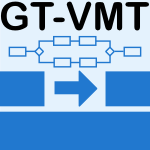 GT-VMT-2006-KoehlerHKRVW08 #development #model transformation #modelling #visual notation
GT-VMT-2006-KoehlerHKRVW08 #development #model transformation #modelling #visual notation- The Role of Visual Modeling and Model Transformations in Business-driven Development (JK, RH, JMK, KR, JV, MW), pp. 5–15.
 CHI-2008-BaumerST #process
CHI-2008-BaumerST #process- Exploring the role of the reader in the activity of blogging (EB, MS, BT), pp. 1111–1120.
 CHI-2008-ButlerJP #policy #wiki
CHI-2008-ButlerJP #policy #wiki- Don’t look now, but we’ve created a bureaucracy: the nature and roles of policies and rules in wikipedia (BSB, EJ, JP), pp. 1101–1110.
 CHI-2008-FindlaterMM #approach #development #evaluation
CHI-2008-FindlaterMM #approach #development #evaluation- Evaluation of a role-based approach for customizing a complex development environment (LF, JM, DM), pp. 1267–1270.
 CHI-2008-GrimesB #multi #scheduling #social
CHI-2008-GrimesB #multi #scheduling #social- Life scheduling to support multiple social roles (AG, AJBB), pp. 821–824.
 CHI-2008-Thom-SantelliMM #social
CHI-2008-Thom-SantelliMM #social- Social tagging roles: publishers, evangelists, leaders (JTS, MJM, DRM), pp. 1041–1044.
 EDOC-2008-AlmeidaG #concept #enterprise #modelling #semantics
EDOC-2008-AlmeidaG #concept #enterprise #modelling #semantics- A Semantic Foundation for Role-Related Concepts in Enterprise Modelling (JPAA, GG), pp. 31–40.
 ICEIS-ISAS2-2008-Tagg #question
ICEIS-ISAS2-2008-Tagg #question- Is there a Role for Philosophy in Group Work Support? (RT), pp. 89–96.
 ECIR-2008-OfoghiYM #identification #natural language #semantics
ECIR-2008-OfoghiYM #identification #natural language #semantics- The Impact of Semantic Class Identification and Semantic Role Labeling on Natural Language Answer Extraction (BO, JY, LM), pp. 430–437.
 SIGIR-2008-Arapakis #feedback #process
SIGIR-2008-Arapakis #feedback #process- Affective feedback: an investigation into the role of emotions in the information seeking process (IA), p. 891.
 SIGIR-2008-ArapakisJG #feedback #process
SIGIR-2008-ArapakisJG #feedback #process- Affective feedback: an investigation into the role of emotions in the information seeking process (IA, JMJ, PDG), pp. 395–402.
 PADL-2008-BeckerN #abduction #declarative #policy
PADL-2008-BeckerN #abduction #declarative #policy- The Role of Abduction in Declarative Authorization Policies (MYB, SN), pp. 84–99.
 RE-2008-ThewS #process
RE-2008-ThewS #process- Investigating the Role of “Soft Issues” in the RE Process (ST, AGS), pp. 63–66.
 SAC-2008-ColantonioPO #approach
SAC-2008-ColantonioPO #approach- A cost-driven approach to role engineering (AC, RDP, AO), pp. 2129–2136.
 ICSE-2008-StoreyRBMS #debugging #developer #game studies #how
ICSE-2008-StoreyRBMS #debugging #developer #game studies #how- TODO or to bug: exploring how task annotations play a role in the work practices of software developers (MADS, JR, RIB, DM, JS), pp. 251–260.
 ICST-2008-RogozP #testing
ICST-2008-RogozP #testing- The Role of Stability Testing in Heterogeneous Application Environment (KR, TP), pp. 432–439.
 IJCAR-2008-Gupta #automation #challenge #verification
IJCAR-2008-Gupta #automation #challenge #verification- Software Verification: Roles and Challenges for Automatic Decision Procedures (AG), p. 1.
 DATE-2007-CabodiNQ #induction #invariant #model checking
DATE-2007-CabodiNQ #induction #invariant #model checking- Boosting the role of inductive invariants in model checking (GC, SN, SQ), pp. 1319–1324.
 VLDB-2007-DeshpandeS #database #modelling #probability #visual notation
VLDB-2007-DeshpandeS #database #modelling #probability #visual notation- Probabilistic Graphical Models and their Role in Databases (AD, SS), pp. 1435–1436.
 MSR-2007-YuR #cvs #developer #mining #open source #repository
MSR-2007-YuR #cvs #developer #mining #open source #repository- Mining CVS Repositories to Understand Open-Source Project Developer Roles (LY, SR), p. 8.
 CHI-2007-XiaoSC #interactive #performance
CHI-2007-XiaoSC #interactive #performance- The role of choice and customization on users’ interaction with embodied conversational agents: effects on perception and performance (JX, JTS, RC), pp. 1293–1302.
 DHM-2007-DeLaurentis #complexity
DHM-2007-DeLaurentis #complexity- Role of Humans in Complexity of a System-of-Systems (DD), pp. 363–371.
 HCI-AS-2007-ConvertinoZGCR #approach #distributed #multi
HCI-AS-2007-ConvertinoZGCR #approach #distributed #multi- A Role-Based Multiple View Approach to Distributed Geo-Collaboration (GC, DZ, CHG, JMC, MBR), pp. 561–570.
 HCI-AS-2007-VanackenRLC #collaboration #user interface
HCI-AS-2007-VanackenRLC #collaboration #user interface- Focus+Roles: Socio-Organizational Conflict Resolution in Collaborative User Interfaces (DV, CR, KL, KC), pp. 788–796.
 HCI-AS-2007-ZamzuriW
HCI-AS-2007-ZamzuriW- The Role of Cognitive Styles in Groupware Acceptance (NZ, WW), pp. 835–845.
 HCI-IDU-2007-BockKLS
HCI-IDU-2007-BockKLS- The Role of Task Characteristics and Organization Culture in Non-Work Related Computing (NWRC) (GWB, HHK, PL, HS), pp. 681–690.
 HCI-IDU-2007-ChevalierDMV #quality #web
HCI-IDU-2007-ChevalierDMV #quality #web- Searching for Information on the Web: Role of Aging and Ergonomic Quality of Website (AC, AD, DM, CV), pp. 691–700.
 HCI-IDU-2007-Janlert #concept #human-computer #interactive #interface
HCI-IDU-2007-Janlert #concept #human-computer #interactive #interface- The Evasive Interface — The Changing Concept of Interface and the Varying Role of Symbols in Human-Computer Interaction (LEJ), pp. 117–126.
 HCI-IDU-2007-Uldall-EspersenF #development #usability
HCI-IDU-2007-Uldall-EspersenF #development #usability- Usability and Software Development: Roles of the Stakeholders (TUE, EF), pp. 642–651.
 HCI-IDU-2007-VogiazouFL #design #process
HCI-IDU-2007-VogiazouFL #design #process- The Use of Improvisational Role-Play in User Centered Design Processes (YV, JF, JL), pp. 262–272.
 OCSC-2007-PanKL #community #design #game studies #guidelines #online
OCSC-2007-PanKL #community #design #game studies #guidelines #online- Sociability Design Guidelines for the Online Gaming Community: Role Play and Reciprocity (YCP, LK, JJL), pp. 426–434.
 ICEIS-EIS-2007-FosterLHS #security
ICEIS-EIS-2007-FosterLHS #security- A Change Strategy for Organisational Security: The Role of Critical Success Factors (SF, KL, PH, AS), pp. 375–380.
 CIKM-2007-PascaDG #documentation #query
CIKM-2007-PascaDG #documentation #query- The role of documents vs. queries in extracting class attributes from text (MP, BVD, NG), pp. 485–494.
 ICML-2007-SuttonKS #on the
ICML-2007-SuttonKS #on the- On the role of tracking in stationary environments (RSS, AK, DS), pp. 871–878.
 SEKE-2007-AlencarWSF #deployment #game studies #information management #question
SEKE-2007-AlencarWSF #deployment #game studies #information management #question- Do Neural-Network Question-Answering Systems Have a Role to Play in the Deployment of Real World Information Systems? (AJA, RCW, EAS, ALF), pp. 386–391.
 RE-2007-Cleland-Huang #quality #requirements
RE-2007-Cleland-Huang #quality #requirements- Quality Requirements and their Role in Successful Products (JCH), p. 361.
 ICSE-2007-JensenS #case study #comparative #migration #process
ICSE-2007-JensenS #case study #comparative #migration #process- Role Migration and Advancement Processes in OSSD Projects: A Comparative Case Study (CJ, WS), pp. 364–374.
 ICSE-2007-PistoiaFFY #enterprise #modelling #policy #security #validation
ICSE-2007-PistoiaFFY #enterprise #modelling #policy #security #validation- When Role Models Have Flaws: Static Validation of Enterprise Security Policies (MP, SJF, RJF, EY), pp. 478–488.
 ICSE-2007-RiccaPTTC #comprehension #experience #uml
ICSE-2007-RiccaPTTC #comprehension #experience #uml- The Role of Experience and Ability in Comprehension Tasks Supported by UML Stereotypes (FR, MDP, MT, PT, MC), pp. 375–384.
 ICLP-2007-LiuPST #constraints #logic programming #source code
ICLP-2007-LiuPST #constraints #logic programming #source code- Logic Programs with Abstract Constraint Atoms: The Role of Computations (LL, EP, TCS, MT), pp. 286–301.
 CSEET-2006-ThompsonE #education #industrial #re-engineering
CSEET-2006-ThompsonE #education #industrial #re-engineering- Workshop on Best Practice in Software Engineering: The Role of Industry in Software Engineering Education and Training (JBT, HME), p. 247.
 ITiCSE-2006-DavisK
ITiCSE-2006-DavisK- The role of computer science in digital production arts (TAD, JLKG), pp. 73–77.
 ITiCSE-2006-GerdtS #automation #detection
ITiCSE-2006-GerdtS #automation #detection- A web-based service for the automatic detection of roles of variables (PG, JS), pp. 178–182.
 ICPC-2006-Marinescu #assessment #design #enterprise #identification #quality
ICPC-2006-Marinescu #assessment #design #enterprise #identification #quality- Identification of Design Roles for the Assessment of Design Quality in Enterprise Applications (CM), pp. 169–180.
 WCRE-2006-Briand #challenge #paradigm #reverse engineering
WCRE-2006-Briand #challenge #paradigm #reverse engineering- The Experimental Paradigm in Reverse Engineering: Role, Challenges, and Limitations (LCB), pp. 3–8.
 PEPM-2006-LiuWGRCZZ #data access #implementation #performance
PEPM-2006-LiuWGRCZZ #data access #implementation #performance- Core role-based access control: efficient implementations by transformations (YAL, CW, MG, TR, YC, YZ, JZ), pp. 112–120.
 ICALP-v2-2006-JagadeesanJPR #data access #named #programming
ICALP-v2-2006-JagadeesanJPR #data access #named #programming- λ-RBAC: Programming with Role-Based Access Control (RJ, AJ, CP, JR), pp. 456–467.
 SEFM-2006-NareshC
SEFM-2006-NareshC- A Model for Temporal relations between Object Roles (GN, BDC), pp. 100–107.
 CHI-2006-LukPLMLH #design #interactive #mobile #prototype #using
CHI-2006-LukPLMLH #design #interactive #mobile #prototype #using- A role for haptics in mobile interaction: initial design using a handheld tactile display prototype (JL, JP, SL, KEM, VL, VH), pp. 171–180.
 CHI-2006-WangXXWZDZ #game studies #video
CHI-2006-WangXXWZDZ #game studies #video- Face-tracking as an augmented input in video games: enhancing presence, role-playing and control (SW, XX, YX, CW, WZ, XD, DZ), pp. 1097–1106.
 CHI-2006-ZanbakaGH #gender #persuasion
CHI-2006-ZanbakaGH #gender #persuasion- Can a virtual cat persuade you?: the role of gender and realism in speaker persuasiveness (CAZ, PG, LFH), pp. 1153–1162.
 CAiSE-2006-PetrovicGN #database #interactive #modelling
CAiSE-2006-PetrovicGN #database #interactive #modelling- Role-Based Modelling of Interactions in Database Applications (MP, MG, MCN), pp. 63–77.
 EDOC-2006-SunMY #approach #flexibility #novel #workflow
EDOC-2006-SunMY #approach #flexibility #novel #workflow- A Novel Approach for Role Hierarchies in Flexible RBAC Workflow (YS, XM, FY), pp. 488–491.
 ICPR-v1-2006-SunSM #classification #simulation
ICPR-v1-2006-SunSM #classification #simulation- The Role of Featural and Configural Information in Face Classification A Simulation of the Expertise Hypothesis (YS, NS, MM), pp. 1166–1170.
 SEKE-2006-CookeRW #verification
SEKE-2006-CookeRW #verification- The Evolutionary Role of Variable Assignment and Its Impact on Program Verification (DEC, JNR, RGW), pp. 315–320.
 SEKE-2006-Merz #approach #java #security #using
SEKE-2006-Merz #approach #java #security #using- Using the Dynamic Proxy Approach to Introduce Role-Based Security to Java Data Objects (MM), pp. 404–409.
 SIGIR-2006-LinD #case study #concept #information management #retrieval
SIGIR-2006-LinD #case study #concept #information management #retrieval- The role of knowledge in conceptual retrieval: a study in the domain of clinical medicine (JJL, DDF), pp. 99–106.
 SAC-2006-BaldoniBT #java #named #object-oriented #programming language
SAC-2006-BaldoniBT #java #named #object-oriented #programming language- powerJava: ontologically founded roles in object oriented programming languages (MB, GB, LWNvdT), pp. 1414–1418.
 SAC-2006-DamianiB #architecture #data access
SAC-2006-DamianiB #architecture #data access- Architectural issues for a location-aware role-based access control system (MLD, EB), pp. 1184–1185.
 SAC-2006-Fasli #on the
SAC-2006-Fasli #on the- On the relationship between roles and power: preliminary report (MF), pp. 313–318.
 ICSE-2006-DamianLM #effectiveness #requirements
ICSE-2006-DamianLM #effectiveness #requirements- The role of asynchronous discussions in increasing the effectiveness of remote synchronous requirements negotiations (DED, FL, TM), pp. 917–920.
 ICSE-2006-KramerH #abstraction #re-engineering
ICSE-2006-KramerH #abstraction #re-engineering- The role of abstraction in software engineering (JK, OH), pp. 1017–1018.
 ICSE-2006-MaidenRR #requirements
ICSE-2006-MaidenRR #requirements- Creative requirements: invention and its role in requirements engineering (NAMM, SR, JR), pp. 1073–1074.
 ICSE-2006-MikulovicH #communication #development #distributed #how #quote #requirements #what
ICSE-2006-MikulovicH #communication #development #distributed #how #quote #requirements #what- “How do I know what I have to do?”: the role of the inquiry culture in requirements communication for distributed software development projects (VM, MH), pp. 921–925.
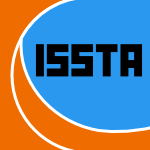 ISSTA-2006-CentonzeNFP #consistency #data access #validation
ISSTA-2006-CentonzeNFP #consistency #data access #validation- Role-Based access control consistency validation (PC, GN, SJF, MP), pp. 121–132.
 WICSA-2005-Klein #architecture #how #question
WICSA-2005-Klein #architecture #how #question- How Does the Architect’s Role Change as the Software Ages? (JK), p. 141.
 DATE-2005-ChureauSA #functional #prototype #uml
DATE-2005-ChureauSA #functional #prototype #uml- The Role of Model-Level Transactors and UML in Functional Prototyping of Systems-on-Chip: A Software-Radio Application (AC, YS, EMA), pp. 698–703.
 HT-2005-YamamotoNNAM #authoring #hypermedia #what
HT-2005-YamamotoNNAM #authoring #hypermedia #what- What is the space for?: the role of space in authoring hypertext representations (YY, KN, YN, MA, RM), pp. 117–125.
 SIGMOD-2005-Bernstein #integration
SIGMOD-2005-Bernstein #integration- The many roles of meta data in data integration (PAB), p. 792.
 CSEET-2005-Sindre #case study #communication #education #experience #game studies #student
CSEET-2005-Sindre #case study #communication #education #experience #game studies #student- Teaching Oral Communication Techniques in RE by Student-Student Role Play: Initial Experiences (GS), pp. 85–92.
 ITiCSE-2005-BoavidaSASLV #game studies #online
ITiCSE-2005-BoavidaSASLV #game studies #online- The MulE game engine extending online role-playing games (MB, JPS, PAAA, LS, JL, RV), p. 404.
 ITiCSE-2005-Jimenez-DiazGGG #behaviour #comprehension #visualisation
ITiCSE-2005-Jimenez-DiazGGG #behaviour #comprehension #visualisation- Software behaviour understanding Supported by dynamic visualization and role-play (GJD, MGA, MAGM, PAGC), pp. 54–58.
 FASE-2005-CaneteM #ontology #problem #re-engineering #towards
FASE-2005-CaneteM #ontology #problem #re-engineering #towards- Towards a Theory on the Role of Ontologies in Software Engineering Problem Solving (JMC, FJGM), pp. 205–219.
 ICSM-2005-DigJ #api #evolution #refactoring
ICSM-2005-DigJ #api #evolution #refactoring- The Role of Refactorings in API Evolution (DD, REJ), pp. 389–398.
 CHI-2005-CarterM
CHI-2005-CarterM- When participants do the capturing: the role of media in diary studies (SC, JM), pp. 899–908.
 ICEIS-v3-2005-XuZ #modelling #multi
ICEIS-v3-2005-XuZ #modelling #multi- A Methodology for Role-Based Modeling of Open Multi-Agent Software Systems (HX, XZ), pp. 246–253.
 ECIR-2005-Vechtomova #information retrieval #interactive #multi
ECIR-2005-Vechtomova #information retrieval #interactive #multi- The Role of Multi-word Units in Interactive Information Retrieval (OV), pp. 403–420.
 MoDELS-2005-Pavlich-MariscalMD #aspect-oriented #data access #framework #programming #using
MoDELS-2005-Pavlich-MariscalMD #aspect-oriented #data access #framework #programming #using- A Formal Enforcement Framework for Role-Based Access Control Using Aspect-Oriented Programming (JAPM, LM, SAD), pp. 537–552.
 MoDELS-2005-StaronK #design
MoDELS-2005-StaronK #design- Properties of Stereotypes from the Perspective of Their Role in Designs (MS, LK), pp. 201–216.
 MoDELS-2005-Pavlich-MariscalMD #aspect-oriented #data access #framework #programming #using
MoDELS-2005-Pavlich-MariscalMD #aspect-oriented #data access #framework #programming #using- A Formal Enforcement Framework for Role-Based Access Control Using Aspect-Oriented Programming (JAPM, LM, SAD), pp. 537–552.
 MoDELS-2005-StaronK #design
MoDELS-2005-StaronK #design- Properties of Stereotypes from the Perspective of Their Role in Designs (MS, LK), pp. 201–216.
 PADL-2005-TanasescuW #configuration management #declarative
PADL-2005-TanasescuW #configuration management #declarative- Role-Based Declarative Synchronization for Reconfigurable Systems (VT, PTW), pp. 52–66.
 RE-2005-ChisanD #requirements #risk management
RE-2005-ChisanD #requirements #risk management- Exploring the role of requirements engineering in improving risk management (JC, DD), pp. 481–482.
 RE-2005-Corniou #challenge #information management #policy
RE-2005-Corniou #challenge #information management #policy- The Role of Information Systems within Corporate Strategy and Management Policies: New Challenges (JPC), p. 4.
 RE-2005-CrookIN #modelling #on the #policy
RE-2005-CrookIN #modelling #on the #policy- On Modelling Access Policies: Relating Roles to their Organisational Context (RC, DCI, BN), pp. 157–166.
 RE-2005-DiazPM #interactive #modelling #using
RE-2005-DiazPM #interactive #modelling #using- Modeling Interactions using Role-Driven Patterns (ID, OP, AM), pp. 209–220.
 RE-2005-FickasRS #requirements
RE-2005-FickasRS #requirements- The Role of Deferred Requirements in a Longitudinal Study of Emailing (SF, WNR, MMS), pp. 145–156.
 RE-2005-KujalaKLK #quality #requirements
RE-2005-KujalaKLK #quality #requirements- The Role of User Involvement in Requirements Quality and Project Success (SK, MK, LL, TK), pp. 75–84.
 SAC-2005-AdaikkalavanC #approach #named #security #web
SAC-2005-AdaikkalavanC #approach #named #security #web- SmartGate: a smart push-pull approach to support role-based security in web gateways (RA, SC), pp. 1727–1731.
 SAC-2005-CaetanoST #process #using
SAC-2005-CaetanoST #process #using- Using roles and business objects to model and understand business processes (AC, ARS, JMT), pp. 1308–1313.
 SAC-2005-QianZ #effectiveness #visualisation
SAC-2005-QianZ #effectiveness #visualisation- The role of visualization in effective data cleaning (YQ, KZ), pp. 1239–1243.
 SAC-2005-SohrDA #information management #policy #security #specification
SAC-2005-SohrDA #information management #policy #security #specification- Formal specification of role-based security policies for clinical information systems (KS, MD, GJA), pp. 332–339.
 ICSE-2005-DubinskyH
ICSE-2005-DubinskyH- The role of a project-based capstone course (YD, OH), pp. 645–646.
 ICSE-2005-TamaiUI #adaptation
ICSE-2005-TamaiUI #adaptation- An adaptive object model with dynamic role binding (TT, NU, RI), pp. 166–175.
 ATEM-2004-KarailaS05 #case study #industrial #metadata #on the #reuse #reverse engineering #visual notation
ATEM-2004-KarailaS05 #case study #industrial #metadata #on the #reuse #reverse engineering #visual notation- On the Role of Metadata in Visual Language Reuse and Reverse Engineering — An Industrial Case (MK, TS), pp. 29–41.
 CSL-2005-BarrasG #calculus #induction #on the
CSL-2005-BarrasG #calculus #induction #on the- On the Role of Type Decorations in the Calculus of Inductive Constructions (BB, BG), pp. 151–166.
 ASE-2004-McNaughtonCSSRP #design pattern #game studies #generative #named
ASE-2004-McNaughtonCSSRP #design pattern #game studies #generative #named- ScriptEase: Generative Design Patterns for Computer Role-Playing Games (MM, MC, DS, JS, JR, DP), pp. 88–99.
 ASE-2004-McNaughtonCSSRP04a #game studies #generative #named
ASE-2004-McNaughtonCSSRP04a #game studies #generative #named- ScriptEase: Generating Scripting Code for Computer Role-Playing Games (MM, MC, DS, JS, JR, DP), pp. 386–387.
 HT-2004-BuchananBTJ #hypermedia #library
HT-2004-BuchananBTJ #hypermedia #library- Integrating information seeking and structuring: exploring the role of spatial hypertext in a digital library (GB, AB, HWT, MJ), pp. 225–234.
 HT-2004-CarrMWPBHG #library
HT-2004-CarrMWPBHG #library- Extending the role of the digital library: computer support for creating articles (LC, TMB, GW, GP, CB, WH, SG), pp. 12–21.
 SIGMOD-2004-Maurer #database #encryption #security
SIGMOD-2004-Maurer #database #encryption #security- The Role of Cryptography in Database Security (UMM), pp. 5–10.
 ITiCSE-2004-Ben-AriS
ITiCSE-2004-Ben-AriS- Roles of variables as seen by CS educators (MBA, JS), pp. 52–56.
 ITiCSE-2004-KuittinenS #education #programming
ITiCSE-2004-KuittinenS #education #programming- Teaching roles of variables in elementary programming courses (MK, JS), pp. 57–61.
 FASE-2004-KimRFL #data access #modelling #uml #using
FASE-2004-KimRFL #data access #modelling #uml #using- Modeling Role-Based Access Control Using Parameterized UML Models (DKK, IR, RBF, NL), pp. 180–193.
 SAS-2004-KuncakR #logic
SAS-2004-KuncakR #logic- Generalized Records and Spatial Conjunction in Role Logic (VK, MCR), pp. 361–376.
 DLT-2004-KuskeW #automaton
DLT-2004-KuskeW #automaton- The Role of the Complementarity Relation in Watson-Crick Automata and Sticker Systems (DK, PW), pp. 272–283.
 CHI-2004-SvanaesS #design #game studies #mobile #prototype
CHI-2004-SvanaesS #design #game studies #mobile #prototype- Putting the users center stage: role playing and low-fi prototyping enable end users to design mobile systems (DS, GS), pp. 479–486.
 AdaEurope-2004-Olive #concept #development #information management #on the
AdaEurope-2004-Olive #concept #development #information management #on the- On the Role of Conceptual Schemas in Information Systems Development (AO), pp. 16–34.
 ICEIS-v3-2004-AsriNKC #aspect-oriented #comparison #lifecycle
ICEIS-v3-2004-AsriNKC #aspect-oriented #comparison #lifecycle- Views, Subjects, Roles and Aspects: A Comparison Along Software Lifecycle (BEA, MN, AK, BC), pp. 139–146.
 ICEIS-v3-2004-CaetanoST #modelling #process
ICEIS-v3-2004-CaetanoST #modelling #process- Business Process Modeling with Objects and Roles (AC, ARS, JMT), pp. 109–114.
 ICEIS-v4-2004-Carneiro #challenge #learning #network #process
ICEIS-v4-2004-Carneiro #challenge #learning #network #process- Learning Processes and the Role of Technological Networks as an Innovative Challenge (AC), pp. 497–501.
 ICPR-v4-2004-KadyrovP #reverse engineering
ICPR-v4-2004-KadyrovP #reverse engineering- Reverse Engineering the Human Vision System: A Possible Explanation for the Role of Microsaccades (AK, MP), pp. 64–67.
 KR-2004-MasoloVBCFGG #social
KR-2004-MasoloVBCFGG #social- Social Roles and their Descriptions (CM, LV, EB, CC, RF, AG, NG), pp. 267–277.
 SIGIR-2004-Leuski #email #people
SIGIR-2004-Leuski #email #people- Email is a stage: discovering people roles from email archives (AL), pp. 502–503.
 FSE-2004-SouzaRCMP #api #collaboration #development #how #multi
FSE-2004-SouzaRCMP #api #collaboration #development #how #multi- How a good software practice thwarts collaboration: the multiple roles of APIs in software development (CRBdS, DFR, LTC, DRM, JFP), pp. 221–230.
 ITiCSE-2003-CampbellHK03a
ITiCSE-2003-CampbellHK03a- The role of two-year colleges in educating the cyber-security workforce (RDC, EKH, KJK), p. 235.
 CSMR-2003-NajjarCLM #object-oriented #refactoring
CSMR-2003-NajjarCLM #object-oriented #refactoring- The Role of Constructors in the Context of Refactoring Object-Oriented System (RN, SC, GL, KM), p. 111–?.
 ICALP-2003-FialaP #complexity #problem
ICALP-2003-FialaP #complexity #problem- The Computational Complexity of the Role Assignment Problem (JF, DP), pp. 817–828.
 SOFTVIS-2003-SajaniemiK #animation
SOFTVIS-2003-SajaniemiK #animation- Program Animation Based on the Roles of Variables (JS, MK), pp. 7–16.
 ICEIS-v3-2003-BalabkoW #concept #modelling #synthesis
ICEIS-v3-2003-BalabkoW #concept #modelling #synthesis- A Synthesis of Business Role Models: Conceptual Tool for Business Innovations (PB, AW), pp. 211–220.
 ICEIS-v3-2003-DomingosV #adaptation #data access #workflow
ICEIS-v3-2003-DomingosV #adaptation #data access #workflow- A Dynamic Role Based Access Control Model for Adaptive Workflow Management Systems (DD, PV), pp. 167–173.
 ICEIS-v3-2003-YangZ #data access #enterprise #xml
ICEIS-v3-2003-YangZ #data access #enterprise #xml- An XML Based Administration Method on Role-Based Access Control in the Enterprise Environment (CY, CNZ), pp. 646–649.
 SEKE-2003-MichaudS #information management
SEKE-2003-MichaudS #information management- The Role of Knowledge in Software Customization (JM, MADS), pp. 187–195.
 UML-2003-SteimannGM #modelling #object-oriented #on the
UML-2003-SteimannGM #modelling #object-oriented #on the- On the Key Role of Compositioning Object-Oriented Modelling (FS, JG, TAM), pp. 106–120.
 PADL-2003-Page #biology #database #declarative #mining
PADL-2003-Page #biology #database #declarative #mining- The Role of Declarative Languages in Mining Biological Databases (CDPJ), p. 1.
 REFSQ-J-2002-CrookIN03 #modelling #policy #requirements #using
REFSQ-J-2002-CrookIN03 #modelling #policy #requirements #using- Modelling access policies using roles in requirements engineering (RC, DCI, BN), pp. 979–991.
 RE-2003-ZowghiP #education #game studies #lessons learnt #requirements
RE-2003-ZowghiP #education #game studies #lessons learnt #requirements- Teaching Requirements Engineering through Role Playing: Lessons Learnt (DZ, SP), p. 233–?.
 SAC-2003-AhnM #distributed #health
SAC-2003-AhnM #distributed #health- Role-Based Authorization in Decentralized Health Care Environments (GJA, BM), pp. 251–256.
 SAC-2003-BandiniMV #game studies #multi #profiling #testing
SAC-2003-BandiniMV #game studies #multi #profiling #testing- A Multi-Agent System for Remote Psychological Profiling with Role Playing Games Based Tests (SB, SM, GV), pp. 33–37.
 SAC-2003-CabriFL #mobile
SAC-2003-CabriFL #mobile- Enabling Mobile Agents to Dynamically Assume Roles (GC, LF, LL), pp. 56–60.
 SAC-2003-CazierSL #privacy #trust
SAC-2003-CazierSL #privacy #trust- Addressing E-Business Privacy Concerns: The Roles of Trust and Value Compatibility (JC, BS, RSL), pp. 617–622.
 SAC-2003-ShinACJ #design #implementation
SAC-2003-ShinACJ #design #implementation- A Role Administration System in Role-based Authorization Infrastructures — Design and Implementation (DS, GJA, SC, SJ), pp. 325–330.
 SAC-2003-YangZ #approach #data access #data flow #object-oriented
SAC-2003-YangZ #approach #data access #data flow #object-oriented- An Approach to Secure Information Flow on Object Oriented Role-based Access Control Model (CY, CNZ), pp. 302–306.
 CSMR-2002-TahvildariK #design pattern #on the #quality #re-engineering
CSMR-2002-TahvildariK #design pattern #on the #quality #re-engineering- On the Role of Design Patterns in Quality-Driven Re-engineering (LT, KK), pp. 230–240.
 ICSM-2002-DengK #concept
ICSM-2002-DengK #concept- Recovering Conceptual Roles of Data in a Program (YD, SCK), pp. 342–350.
 ICSM-2002-RichnerD #information management #using
ICSM-2002-RichnerD #information management #using- Using Dynamic Information for the Iterative Recovery of Collaborations and Roles (TR, SD), pp. 34–43.
 IWPC-2002-RajlichW #comprehension #concept
IWPC-2002-RajlichW #comprehension #concept- The Role of Concepts in Program Comprehension (VR, NW), pp. 271–278.
 WCRE-2002-DengK #comprehension #concept #using
WCRE-2002-DengK #comprehension #concept #using- Using Conceptual Roles of Data for Enhanced Program Comprehension (YD, SCK), pp. 119–127.
 CAiSE-2002-DahchourPZ
CAiSE-2002-DahchourPZ- A Generic Role Model for Dynamic Objects (MD, AP, EZ), pp. 643–658.
 CAiSE-2002-PapadopoulosP #community #recommendation #semantics
CAiSE-2002-PapadopoulosP #community #recommendation #semantics- The Role of Semantic Relevance in Dynamic User Community Management and the Formulation of Recommendations (NP, DP), pp. 200–215.
 CAiSE-2002-Saeki #model transformation
CAiSE-2002-Saeki #model transformation- Role of Model Transformation in Method Engineering (MS), pp. 626–642.
 ICEIS-2002-BirkholzerV #architecture #enterprise #information management #integration
ICEIS-2002-BirkholzerV #architecture #enterprise #information management #integration- The Role of Enterprise Architecture for Planning and Managing Future Information Systems Integration (TB, JV), pp. 42–49.
 ICEIS-2002-Cantone #empirical #metric #modelling #process #re-engineering
ICEIS-2002-Cantone #empirical #metric #modelling #process #re-engineering- Experimental Software Engineering: Role and Impact of Measurement Models on Empirical Processes (GC), p. 3.
 ICEIS-2002-PelechanoACP #automation #code generation #concept #object-oriented
ICEIS-2002-PelechanoACP #automation #code generation #concept #object-oriented- Automating the Code Generation of Role Classes in OO Conceptual Schemas (VP, MA, EC, OP), pp. 658–666.
 CIKM-2002-GreiffMP #information retrieval #probability
CIKM-2002-GreiffMP #information retrieval #probability- The role of variance in term weighting for probabilistic information retrieval (WRG, WTM, JMP), pp. 252–259.
 KR-2002-Gardenfors #concept #higher-order #induction #similarity
KR-2002-Gardenfors #concept #higher-order #induction #similarity- The Role of Higher Order Similarity in Induction and Concept Formation (PG), p. 629.
 SEKE-2002-Medvidovic #architecture #development #middleware #on the
SEKE-2002-Medvidovic #architecture #development #middleware #on the- On the role of middleware in architecture-based software development (NM), pp. 299–306.
 POPL-2002-KuncakLR #analysis
POPL-2002-KuncakLR #analysis- Role analysis (VK, PL, MCR), pp. 17–32.
 ICSE-2002-DemskyR #object-oriented #source code
ICSE-2002-DemskyR #object-oriented #source code- Role-based exploration of object-oriented programs (BD, MCR), pp. 313–334.
 SAT-2002-BrglezLS #algorithm #benchmark #metric #satisfiability #testing
SAT-2002-BrglezLS #algorithm #benchmark #metric #satisfiability #testing- The role of a skeptic agent in testing and benchmarking of SAT algorithms (FB, XYL, MFS), p. 13.
 CBSE-2001-Lau #certification #component #predict
CBSE-2001-Lau #certification #component #predict- Component Certification and System Prediction: Is There a Role for Formality (KKL), p. 16.
 WICSA-2001-Laine #architecture #development #embedded #object-oriented #problem #scalability
WICSA-2001-Laine #architecture #development #embedded #object-oriented #problem #scalability- The Role of SW Architectures in Solving Fundamental Problems in Object-Oriented Development of Large Embedded SW Systems (PKL), pp. 14–23.
 ICSM-2001-ZelkowitzR #independence #maintenance #safety #validation #verification
ICSM-2001-ZelkowitzR #independence #maintenance #safety #validation #verification- The Role of Independent Verification and Validation in Maintaining a Safety Critical Evolutionary Software in a Complex Environment: The NASA Space Shuttle Program (MVZ, IR), pp. 118–126.
 CHI-2001-EllisB #community #design #online #social
CHI-2001-EllisB #community #design #online #social- Designing palaver tree online: supporting social roles in a community of oral history (JBE, AB), pp. 474–481.
 GCSE-2001-KimC #component #design #generative #testing
GCSE-2001-KimC #component #design #generative #testing- The Role of Design Components in Test Plan Generation (JK, CRC), pp. 140–152.
 RE-2001-AntonEAP #policy #privacy #requirements
RE-2001-AntonEAP #policy #privacy #requirements- The Role of Policy and Stakeholder Privacy Values in Requirements Engineering (AIA, JBE, TAA, CP), pp. 138–145.
 RE-2001-Kovitz #backtracking #development #learning
RE-2001-Kovitz #backtracking #development #learning- Is Backtracking so Bad? The Role of Learning in Software Development (BK), p. 272.
 SAC-2001-Chainbi #logic
SAC-2001-Chainbi #logic- A belief-goal-role logic for a single-agent system (WC), pp. 22–26.
 DAC-2000-DallyC #design
DAC-2000-DallyC #design- The role of custom design in ASIC Chips (WJD, AC), pp. 643–647.
 CHI-2000-WangM #constraints #visual notation
CHI-2000-WangM #constraints #visual notation- The role of contextual haptic and visual constraints on object manipulation in virtual environments (YW, CLM), pp. 532–539.
 CSCW-2000-GuzdialRK
CSCW-2000-GuzdialRK- Recognizing and supporting roles in CSCW (MG, JR, BK), pp. 261–268.
 CSCW-2000-SingleySFFS #algebra #collaboration #learning
CSCW-2000-SingleySFFS #algebra #collaboration #learning- Algebra jam: supporting teamwork and managing roles in a collaborative learning environment (MKS, MS, PGF, RGF, SS), pp. 145–154.
 EDOC-2000-GenilloudW #concept #modelling
EDOC-2000-GenilloudW #concept #modelling- A Foundation for the Concept of Role in Object Modelling (GG, AW), pp. 76–85.
 ICPR-v2-2000-SkurichinaYD #subclass
ICPR-v2-2000-SkurichinaYD #subclass- The Role of Subclasses in Machine Diagnostics (MS, AY, RPWD), pp. 2668–2671.
 KR-2000-HaarslevM #reasoning #strict #transitive
KR-2000-HaarslevM #reasoning #strict #transitive- Expressive ABox Reasoning with Number Restrictions, Role Hierarchies, and Transitively Closed Roles (VH, RM), pp. 273–284.
 SIGIR-2000-WuFW #empirical #retrieval
SIGIR-2000-WuFW #empirical #retrieval- The role of a judge in a user based retrieval experiment (MW, MF, RW), pp. 331–333.
 UML-2000-BarrosDLMRW #architecture #concept #enterprise #process #uml
UML-2000-BarrosDLMRW #architecture #concept #enterprise #process #uml- Processes, Roles, and Events: UML Concepts for Enterprise Architecture (APB, KD, ML, ZM, KR, AW), pp. 62–77.
 UML-2000-Steimann #concept #uml
UML-2000-Steimann #concept #uml- A Radical Revision of UML’s Role Concept (FS), pp. 194–209.
 UML-2000-WegmannG #case study #diagrams
UML-2000-WegmannG #case study #diagrams- The Roles of “Roles” in Use Case Diagrams (AW, GG), pp. 210–224.
 TOOLS-ASIA-2000-ZhangFZ #database #design #web
TOOLS-ASIA-2000-ZhangFZ #database #design #web- Role-Based Database Designing for Managing Complex Objects and Their Relationships on the Web (YZ, JF, LZ), pp. 212–219.
 TOOLS-EUROPE-2000-ZhaoK #component #design #modelling
TOOLS-EUROPE-2000-ZhaoK #component #design #modelling- Role Modeling for Component Design (LZ, EAK), pp. 312–323.
 TOOLS-PACIFIC-2000-NguyenZA #approach #modelling #set
TOOLS-PACIFIC-2000-NguyenZA #approach #modelling #set- A Set Approach to Role Modeling (LTN, LZ, BA), pp. 158–169.
 TOOLS-USA-2000-MegaacheKJ #architecture #security
TOOLS-USA-2000-MegaacheKJ #architecture #security- A Role-Based Security Architecture for Business Intelligence (SM, TK, GRRJ), pp. 295–306.
 SAC-2000-AmirbekyanZ #corba #performance #transaction
SAC-2000-AmirbekyanZ #corba #performance #transaction- The Role of Transaction Management in CORBA/ODB Integrated Systems’ Performance (VA, KZ), pp. 733–740.
 ICSE-2000-KirschS #tutorial
ICSE-2000-KirschS #tutorial- Intellectual property protection for software in the United States and Europe (tutorial session): the changing roles of patents and copyrights (GJK, YS), p. 827.
 LICS-2000-LindellW #decidability #finite #first-order
LICS-2000-LindellW #decidability #finite #first-order- The Role of Decidability in First Order Separations over Classes of Finite Structures (SL, SW), pp. 45–50.
 HT-1999-Calvi #quote
HT-1999-Calvi #quote- “Lector in Rebus”: The Role of the Reader and the Characteristics of Hyperreading (LC), pp. 101–109.
 HT-1999-Wang #data access #hypermedia
HT-1999-Wang #data access #hypermedia- Team-and-RoleBbased Organizational Context and Access Control for Cooperative Hypermedia Environments (WW), pp. 37–46.
 ITiCSE-1999-Bobkowska #empirical #game studies
ITiCSE-1999-Bobkowska #empirical #game studies- Laboratory experiment with the 3RolesPlaying method (AEB), pp. 123–126.
 IWPC-1999-MayrhauserL #maintenance #on the #static analysis
IWPC-1999-MayrhauserL #maintenance #on the #static analysis- On the Role of Static Analysis during Software Maintenance (AvM, SL), pp. 170–177.
 FM-v1-1999-Jackson
FM-v1-1999-Jackson- The Role of Formalism in Method (MJ), p. 56.
 HCI-CCAD-1999-VirvouT #development #education
HCI-CCAD-1999-VirvouT #development #education- A role for school teachers in the development of an ITS (MV, VT), pp. 691–695.
 HCI-EI-1999-Boy #safety
HCI-EI-1999-Boy #safety- About the Role of Intelligent Assistants in the Control of Safety-Critical Systems (GAB), pp. 321–325.
 HCI-EI-1999-Davies99a #generative #memory management #strict
HCI-EI-1999-Davies99a #generative #memory management #strict- The role of external memory in a complex task: Effects of device and memory restrictions on program generation (SPD), pp. 1268–1272.
 HCI-EI-1999-FringsW #concept #development
HCI-EI-1999-FringsW #concept #development- Role Concept in Software Development (SF, AW), pp. 1189–1193.
 HCI-EI-1999-Serfaty #design #integration
HCI-EI-1999-Serfaty #design #integration- The Role of Task Driven Design for the Integration of Perspectives (CS), pp. 1318–1321.
 SIGAda-1999-LortzT #abstract syntax tree #ada #c++ #distributed #realtime
SIGAda-1999-LortzT #abstract syntax tree #ada #c++ #distributed #realtime- The role of distributed, real-time Ada & C++ on the Airborne Surveillance Testbed (AST) program (HAL, TAT), pp. 181–182.
 ICEIS-1999-Salameh #enterprise #process #re-engineering
ICEIS-1999-Salameh #enterprise #process #re-engineering- Role of ERP Systems in International Business Process Re-Engineering (ZS), p. 785.
 ICEIS-1999-SolimanP #process
ICEIS-1999-SolimanP #process- Strategic Role of IT Leader in International Business Process Change (FS, JP), p. 784.
 OOPSLA-1999-Kendall #aspect-oriented #design #implementation #programming
OOPSLA-1999-Kendall #aspect-oriented #design #implementation #programming- Role Model Designs and Implementations with Aspect-oriented Programming (EAK), pp. 353–369.
 TOOLS-PACIFIC-1999-BaekdalK #multi
TOOLS-PACIFIC-1999-BaekdalK #multi- Aggregation from Multiple Perspectives by Roles (LKB, BBK), pp. 139–150.
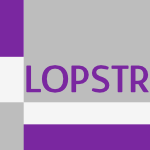 LOPSTR-1999-LammelRL
LOPSTR-1999-LammelRL- Roles of Program Extension (RL, GR, WL), pp. 136–155.
 RE-1999-Heitmeyer #development
RE-1999-Heitmeyer #development- Increasing the Role of RE in the Development of Dependable Systems (CLH, PM), p. 191–?.
 CHI-1998-AltyR #communication #music #using #visual notation
CHI-1998-AltyR #communication #music #using #visual notation- Communicating Graphical Information to Blind Users Using Music: The Role of Context (JLA, DIR), pp. 574–581.
 CSCW-1998-SmithHH #flexibility
CSCW-1998-SmithHH #flexibility- Supporting Flexible Roles in a Shared Space (RBS, RH, BH), pp. 197–206.
 UML-1998-Paech #development #diagrams #on the #process #uml
UML-1998-Paech #development #diagrams #on the #process #uml- On the Role of Activity Diagrams in UML — A User Task Centered Development Process for UML (BP), pp. 267–277.
 OOPSLA-1998-RiehleG #design #framework #integration #modelling
OOPSLA-1998-RiehleG #design #framework #integration #modelling- Role Model Based Framework Design and Integration (DR, TRG), pp. 117–133.
 TOOLS-ASIA-1998-LuoL #modelling
TOOLS-ASIA-1998-LuoL #modelling- Object and Role Models Viewing (ZL, WL), pp. 43–52.
 ICRE-1998-Macaulay #requirements
ICRE-1998-Macaulay #requirements- The Role of the Facilitator in Requirements Engineering (LAM), pp. 244–247.
 CAV-1998-Camilleri #design #multi #proving #theorem proving
CAV-1998-Camilleri #design #multi #proving #theorem proving- A Role for Theorem Proving in Multi-Processor Design (AJC), pp. 45–48.
 LICS-1998-ArieliA #logic
LICS-1998-ArieliA #logic- The Logical Role of the Four-Valued Bilattice (OA, AA), pp. 118–126.
 HCI-CC-1997-Bannon
HCI-CC-1997-Bannon- The Role of Common Information Spaces in CSCW (LJB), pp. 317–320.
 HCI-CC-1997-Bergman #human-computer #standard
HCI-CC-1997-Bergman #human-computer #standard- The Role of Accessibility in HCI Standards (EB), pp. 441–444.
 HCI-CC-1997-EnokiKNESK #implementation
HCI-CC-1997-EnokiKNESK #implementation- Role-Oriented Organization Model and its Implementation with Agent System (HE, YK, KN, TE, YS, SK), pp. 65–68.
 HCI-CC-1997-Karsh
HCI-CC-1997-Karsh- Psychosocial Work Factors and Musculoskeletal Disorders in Office Workers: An Examination of the Mediating Role of Stress (BTK), pp. 521–524.
 HCI-CC-1997-Stary #design #evaluation #user interface
HCI-CC-1997-Stary #design #evaluation #user interface- The Role of Design and Evaluation Principles for User Interfaces for All (CS), pp. 477–480.
 HCI-CC-1997-VartiainenKPN #optimisation
HCI-CC-1997-VartiainenKPN #optimisation- The Role of Information Support Systems in the Joint Optimization (MV, JJJK, AP, MN), pp. 269–272.
 HCI-SEC-1997-AsiuM #design #reasoning #theory and practice
HCI-SEC-1997-AsiuM #design #reasoning #theory and practice- The Role of Case-Based Reasoning in Instructional Design: Theory and Practice (BA, MDM), pp. 153–156.
 HCI-SEC-1997-ShirabeB #3d #game studies #interface #question #realtime
HCI-SEC-1997-ShirabeB #3d #game studies #interface #question #realtime- Do Three Dimensional Realtime Interfaces Really Play Important Roles? (MS, YB), pp. 849–852.
 HCI-SEC-1997-Stary97a #interactive #modelling #question #specification
HCI-SEC-1997-Stary97a #interactive #modelling #question #specification- The Role of Interaction Modeling in Future Cognitive Ergonomics: Do Interaction Models Lead to Formal Specification of Involved Machine Intelligence? (CS), pp. 91–94.
 CAiSE-1997-SteinerN #modelling
CAiSE-1997-SteinerN #modelling- Temporal Object Role Modelling (AS, MCN), pp. 245–258.
 EDOC-1997-LupuS #policy
EDOC-1997-LupuS #policy- A Policy Based Role Object Model (EL, MS), pp. 36–47.
 SIGIR-1997-KlavansTJ #automation #effectiveness #multi #natural language #semiparsing #speech
SIGIR-1997-KlavansTJ #automation #effectiveness #multi #natural language #semiparsing #speech- Effective Use of Natural Language Processing Techniques for Automatic Conflation of Multi-Word Terms: The Role of Derivational Morphology, Part of Speech Tagging, and Shallow Parsing (ET, JK, CJ), pp. 148–155.
 TOOLS-ASIA-1997-LamCW #evaluation #performance
TOOLS-ASIA-1997-LamCW #evaluation #performance- Performance Evaluation of Objects with Roles (FL, HLC, RKW), pp. 2–11.
 TOOLS-PACIFIC-1997-WongC #multi #type safety
TOOLS-PACIFIC-1997-WongC #multi #type safety- Method Dispatching and Type Safety for Objects with Multiple Roles (RKW, HLC), pp. 286–296.
 VLDB-1996-VermeerA #constraints #database
VLDB-1996-VermeerA #constraints #database- The Role of Integrity Constraints in Database Interoperation (MWWV, PMGA), pp. 425–435.
 WPC-1996-MayrhauserV #comprehension #migration #on the #scalability
WPC-1996-MayrhauserV #comprehension #migration #on the #scalability- On the Role of Hypotheses during Opportunistic Understanding While Porting Large Scale Code (AvM, AMV), pp. 68–77.
 ICFP-1996-Okasaki #data type #evaluation #lazy evaluation
ICFP-1996-Okasaki #data type #evaluation #lazy evaluation- The Role of Lazy Evaluation in Amortized Data Structures (CO), pp. 62–72.
 CSCW-1996-Edwards #collaboration #policy
CSCW-1996-Edwards #collaboration #policy- Policies and Roles in Collaborative Applications (WKE), pp. 11–20.
 CSCW-1996-HarrisonD #collaboration
CSCW-1996-HarrisonD #collaboration- Re-place-ing Space: The Roles of Place and Space in Collaborative Systems (SRH, PD), pp. 67–76.
 CSCW-1996-Martial #process #re-engineering #tutorial
CSCW-1996-Martial #process #re-engineering #tutorial- Business Process Reengineering and its Role in Developing CSCW Applications (Tutorial) (FvM), p. 6.
 CAiSE-1996-Daneva #benchmark #development #information management #metric
CAiSE-1996-Daneva #benchmark #development #information management #metric- The Role of Benchmarking in Information System Development (MD), pp. 421–431.
 ICPR-1996-Herve #coordination
ICPR-1996-Herve #coordination- Hand/eye coordination: role of the active observer (JYH), pp. 292–296.
 KR-1996-BaaderS #logic #strict
KR-1996-BaaderS #logic #strict- Number Restrictions on Complex Roles in Description Logics: A Preliminary Report (FB, US), pp. 328–339.
 KR-1996-KambhampatiY #constraints #on the #refinement
KR-1996-KambhampatiY #constraints #on the #refinement- On the Role of Disjunctive Representations and Constraint Propagation in Refinement Planning (SK, XY), pp. 135–146.
 SEKE-1996-MonteroS #component #information management
SEKE-1996-MonteroS #component #information management- The Role of Knowledge Acquisition in Component Based System Construction (LM, CTS), pp. 161–170.
 SEKE-1996-WangTCR #analysis #slicing
SEKE-1996-WangTCR #analysis #slicing- The Role of Program Slicing in Ripple Effect Analysis (YW, WTT, XC, SR), pp. 369–376.
 OOPSLA-1996-VanHilstN #component #design #using
OOPSLA-1996-VanHilstN #component #design #using- Using Role Components to Implement Collaboration-Based Designs (MVH, DN), pp. 359–369.
 ICSE-1996-Basili #re-engineering
ICSE-1996-Basili #re-engineering- The Role of Experimentation in Software Engineering: Past, Current, and Future (VRB), pp. 442–449.
 ICSE-1996-DeMarco #development #past present future
ICSE-1996-DeMarco #development #past present future- The Role of Software Development Methodologies: Past, Present, and Future (TD), pp. 2–4.
 ICSE-1996-Hoare #how #proving #reliability
ICSE-1996-Hoare #how #proving #reliability- The Role of Formal Techniques: Past, Current and Future or How Did Software Get so Reliable without Proof? (Extended Abstract) (CARH), pp. 233–234.
 ICDAR-v2-1995-Pasternak #taxonomy
ICDAR-v2-1995-Pasternak #taxonomy- The role of taxonomy in drawing interpretation (BP), pp. 799–802.
 CSEE-1995-FranceL #comprehension #requirements #specification
CSEE-1995-FranceL #comprehension #requirements #specification- Understanding the Role of Formal Specification Techniques in Requirements Engineering (RBF, MMLP), pp. 207–221.
 CSEE-1995-Hoover #development #realtime
CSEE-1995-Hoover #development #realtime- The Role of the Software Enigneer in Real-Time Software Development: An Introductory Course (CLH), pp. 167–186.
 CIKM-1995-AnandBH #data mining #mining
CIKM-1995-AnandBH #data mining #mining- The Role of Domain Knowledge in Data Mining (SSA, DAB, JGH), pp. 37–43.
 DAC-1994-Murphy #standard
DAC-1994-Murphy #standard- Partnering with EDA Vendors: Tips, Techniques, and the Role of Standards (SM), pp. 131–134.
 CSCW-1994-EvelandBBM #network #tool support
CSCW-1994-EvelandBBM #network #tool support- The Role of “Help Networks” in Facilitating Use of CSCW Tools (JDE, ALB, WB, JM), pp. 265–274.
 CSCW-1994-OkamuraOFY
CSCW-1994-OkamuraOFY- Helping CSCW Applications Succeed: The Role of Mediators in the Context of Use (KO, WJO, MF, JY), pp. 55–65.
 CIKM-1994-FlaterY #community #database #framework
CIKM-1994-FlaterY #community #database #framework- The Role of the Database Community in the National Information Infrastructure (DWF, YY), pp. 379–383.
 KDD-1994-BhandariB #data analysis #on the #statistics
KDD-1994-BhandariB #data analysis #on the #statistics- On the Role of Statistical Significance in Exploratory Data Analysis (ISB, SB), pp. 61–72.
 KR-1994-BaalenF #representation
KR-1994-BaalenF #representation- The Role of Reversible Grammars in Translating Between Representation Languages (JVB, RF), pp. 562–571.
 ECOOP-1994-WieringaJS #approach #logic #subclass
ECOOP-1994-WieringaJS #approach #logic #subclass- Roles and Dynamic Subclasses: A Modal Logic Approach (RW, WdJ, PS), pp. 32–59.
 OOPSLA-1994-BuhrC #design #object-oriented #realtime #thread
OOPSLA-1994-BuhrC #design #object-oriented #realtime #thread- Timethread-Role Maps for Object-Oriented Design of Real-Time-and-Distributed Systems (RJAB, RSC), pp. 301–316.
 TOOLS-EUROPE-1994-PombergerW #development #prototype
TOOLS-EUROPE-1994-PombergerW #development #prototype- The Role of Prototyping in Software Development (GP, RW), p. 525.
 ICRE-1994-ShekaranGJMPR #architecture #requirements
ICRE-1994-ShekaranGJMPR #architecture #requirements- The role of software architecture in requirements engineering (MCS, DG, MJ, NRM, CP, HBR), pp. 239–245.
 ICSE-1994-DeshmukhDLL #case study #experience #standard #testing
ICSE-1994-DeshmukhDLL #case study #experience #standard #testing- The Role of Testing Methodologies in Open Systems Standards: A POSIX Experience Report (GD, RD, JFL, KAL), pp. 233–240.
 ICDAR-1993-Dengel93a #analysis #comprehension #documentation #information management #multi
ICDAR-1993-Dengel93a #analysis #comprehension #documentation #information management #multi- The role of document analysis and understanding in multi-media information systems (AD), pp. 385–390.
 SIGMOD-1993-CohenLB #development
SIGMOD-1993-CohenLB #development- Role of Interoperability in Business Application Development (DC, GL, LB), pp. 487–490.
 VLDB-1993-AlbanoBGO
VLDB-1993-AlbanoBGO- An Object Data Model with Roles (AA, RB, GG, RO), pp. 39–51.
 FME-1993-DurrD #development #realtime
FME-1993-DurrD #development #realtime- Role of VDM(++) in the Development of a Real-Time Tracking and Tracing System (ED, EMD), pp. 64–72.
 HCI-ACS-1993-AielloS #feedback #monitoring #performance
HCI-ACS-1993-AielloS #feedback #monitoring #performance- Electronic Performance Monitoring and Stress: The Role of Feedback and Goal Setting (JRA, YS), pp. 1011–1016.
 HCI-ACS-1993-HjelmquistJ #visual notation
HCI-ACS-1993-HjelmquistJ #visual notation- Work Possibilities for Visually Impaired: The role of Information Technology (EH, BJ), pp. 498–503.
 HCI-ACS-1993-LimC #approach #cumulative
HCI-ACS-1993-LimC #approach #cumulative- An Integrated Approach to Cumulative Trauma Disorders in Computerized Offices: The Role of Psychosocial Work Factors, Psychological Stress and Ergonomic Risk Factors (SYL, PC), pp. 880–885.
 HCI-ACS-1993-ParkerJW
HCI-ACS-1993-ParkerJW- Autonomous Group Working Within Integrated Manufacturing: A Longitudinal Investigation of Employee Role Orientations (SKP, PRJ, TDW), pp. 44–49.
 HCI-SHI-1993-Boase-JelinekM #reasoning
HCI-SHI-1993-Boase-JelinekM #reasoning- Role of Analogical Reasoning as a Tool for Training (DMBJ, DM), pp. 760–765.
 HCI-SHI-1993-RizzoPCB #learning
HCI-SHI-1993-RizzoPCB #learning- Control of Complex System by Situated Knowledge: The Role of Implicit Learning (AR, OP, CC, SB), pp. 855–860.
 OOPSLA-1993-Civello #analysis #design #object-oriented
OOPSLA-1993-Civello #analysis #design #object-oriented- Roles for Composite Objects in Object-Oriented Analysis and Design (FC), pp. 376–393.
 TOOLS-EUROPE-1993-Soley #standard
TOOLS-EUROPE-1993-Soley #standard- Associated Paper: The OMG Role in Norms and Standards (RMS), pp. 275–276.
 TOOLS-USA-1993-Sarris #concept #object-oriented #paradigm
TOOLS-USA-1993-Sarris #concept #object-oriented #paradigm- Role of Conceptual Schema in Object-Oriented Paradigm (AS), pp. 471–485.
 RE-1993-Ryan93a #natural language #requirements
RE-1993-Ryan93a #natural language #requirements- The role of natural language in requirements engineering (KR), pp. 240–242.
 RE-1993-SibleyWMTL #policy #requirements
RE-1993-SibleyWMTL #policy #requirements- The role of policy in requirements definition (EHS, RLW, JBM, MCT, DCL), pp. 277–280.
 SAC-1993-Harandi #reuse
SAC-1993-Harandi #reuse- The Role of Analogy in Software Reuse (MTH), pp. 40–47.
 ICSE-1993-DrakeXTZ #analysis #approach #case study
ICSE-1993-DrakeXTZ #analysis #approach #case study- Approach and Case Study of Requirement Analysis Where End Users Take an Active Role (JMD, WWX, WTT, IAZ), pp. 177–186.
 DAC-1992-ChengCDL #optimisation #performance
DAC-1992-ChengCDL #optimisation #performance- The Role of Long and Short Paths in Circuit Performance Optimization (SWC, HCC, DHCD, AL), pp. 543–548.
 TRI-Ada-C-1992-Moore #evolution #reuse
TRI-Ada-C-1992-Moore #evolution #reuse- The Evolving Role of Software Reuse (JWM), pp. 268–275.
 KR-1992-Hanschke #concept #interactive #specification
KR-1992-Hanschke #concept #interactive #specification- Specifying Role Interaction in Concept Languages (PH), pp. 318–329.
 ML-1992-PerezE #named #problem
ML-1992-PerezE #named #problem- DYNAMIC: A New Role for Training Problems in EBL (MAP, OE), pp. 367–372.
 CADE-1992-LuskW #benchmark #metric #problem #similarity
CADE-1992-LuskW #benchmark #metric #problem #similarity- Benchmark Problems in Which Equality Plays the Major Role (ELL, LW), pp. 781–785.
 DAC-1991-BenkoskiS #layout #synthesis #verification
DAC-1991-BenkoskiS #layout #synthesis #verification- The Role of Timing Verification in Layout Synthesis (JB, AJS), pp. 612–619.
 KBSE-1991-MiriryalaH #specification
KBSE-1991-MiriryalaH #specification- The Role of Analogy in Specification Derivation (KM, MTH), pp. 117–126.
 SIGMOD-1991-RichardsonS #aspect-oriented #independence #multi #named
SIGMOD-1991-RichardsonS #aspect-oriented #independence #multi #named- Aspects: Extending Objects to Support Multiple, Independent Roles (JER, PMS), pp. 298–307.
 CHI-1991-MacLeanBYM #design
CHI-1991-MacLeanBYM #design- Reaching through analogy: a Design Rationale perspective on roles of analogy (AM, VB, RMY, TPM), pp. 167–172.
 KR-1991-Gruber #knowledge base #ontology #reuse
KR-1991-Gruber #knowledge base #ontology #reuse- The Role of Common Ontology in Achieving Sharable, Reusable Knowledge Bases (TRG), pp. 601–602.
 SIGIR-1991-CelentanoFP #documentation #query
SIGIR-1991-CelentanoFP #documentation #query- Querying Office Systems About Document Roles (AC, MGF, SP), pp. 183–190.
 SEKE-1990-StovskyW #design #re-engineering
SEKE-1990-StovskyW #design #re-engineering- The Role of Traditional Engineering Design Techniques in Software Engineering (MPS, BWW), pp. 84–89.
 HT-1989-NeuwirthK #design #process #tool support
HT-1989-NeuwirthK #design #process #tool support- The Role of External Representations in the Writing Process: Implications for the Design of Hypertext-Based Writing Tools (CN, DK), pp. 319–341.
 VLDB-1989-Ioannidis #commutative #linear #recursion
VLDB-1989-Ioannidis #commutative #linear #recursion- Commutativity and its Role in the Processing of Linear Recursion (YEI), pp. 155–163.
 CHI-1989-WolfCLJW #human-computer #question
CHI-1989-WolfCLJW #human-computer #question- The role of laboratory experiments in HCI: help, hindrance, or ho-hum? (CGW, JMC, TKL, BEJ, JW), pp. 265–268.
 CAiSE-1989-Medri #development #information management #knowledge base #process
CAiSE-1989-Medri #development #information management #knowledge base #process- The Role of Knowledge Based Systems to Enhance User Participation in the System Development Process (GMM).
 ML-1989-KulkarniS
ML-1989-KulkarniS- The Role of Experimentation in Scientific Theory Revision (DK, HAS), pp. 278–283.
 ML-1989-WhiteheadB
ML-1989-WhiteheadB- A Role for Anticipation in Reactive Systems that Learn (SDW, DHB), pp. 354–357.
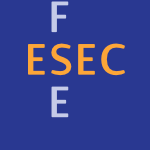 ESEC-1989-Rombach #metric
ESEC-1989-Rombach #metric- The Role of Measurement in ISEEs (HDR), pp. 65–85.
 DAC-1988-AcostaAIR
DAC-1988-AcostaAIR- The Role of VHDL in the MCC CAD System (RDA, MA, GI, BR), pp. 34–39.
 ML-1988-MarkovitchS #learning
ML-1988-MarkovitchS #learning- The Role of Forgetting in Learning (SM, PDS), pp. 459–465.
 HT-1987-Charney
HT-1987-Charney- Comprehending Non-Linear Text: The Role of Discourse Cues and Reading Strategies (DC), pp. 109–120.
 HCI-CE-1987-Marcus #comprehension #information management
HCI-CE-1987-Marcus #comprehension #information management- Knowledge Acquisition Based on Knowledge Role Understanding (SM), pp. 499–506.
 HCI-CE-1987-Raskin #human-computer #interactive
HCI-CE-1987-Raskin #human-computer #interactive- The Role of Nature Language Processing in Human-Computer Interaction (VR), pp. 121–128.
 HCI-SES-1987-Bradley #industrial #using
HCI-SES-1987-Bradley #industrial #using- Changing Roles in an Electronic Industry: Engineers Using CAD System and Secretaries Using work-Processing System (GB), pp. 295–302.
 HCI-SES-1987-MoodyJR #how #question
HCI-SES-1987-MoodyJR #how #question- Vigilance and Its Role in AI Technology: How Smart is Too Smart? (TM, MJ, RR), pp. 263–270.
 ICSE-1987-Stenning #on the
ICSE-1987-Stenning #on the- On the Role of an Environment (VS), pp. 30–35.
 ICLP-1986-FuchiF86 #generative #logic programming
ICLP-1986-FuchiF86 #generative #logic programming- The Role of Logic Programming in the Fifth Generation Computer Project (KF, KF), pp. 1–24.
 DAC-1983-Camoin #perspective
DAC-1983-Camoin #perspective- Central DA and its role: An executive view (RJC), p. 3.
 DAC-1983-Ehr #automation #design
DAC-1983-Ehr #automation #design- Position paper role of technology design rules in Design Automation (GJVE), p. 395.
 DAC-1981-Barck #automation #evolution #interface
DAC-1981-Barck #automation #evolution #interface- The role of engineering in the evolving technology/automation interface (PEB), pp. 706–707.
 DAC-1981-Gould #automation #design
DAC-1981-Gould #automation #design- Changing the Government’s role in design automation (Position Paper) (JMG), pp. 334–335.
 DAC-1981-Lydick #automation #evolution #interface
DAC-1981-Lydick #automation #evolution #interface- The role of engineering in the evolving technology/automation interface (RPL), p. 712.
 VLDB-1979-Bubenko #comprehension #concept #design #modelling #on the
VLDB-1979-Bubenko #comprehension #concept #design #modelling #on the- On the Role of “Understanding Models” in Conceptual Schema Design (JABJ), pp. 129–139.
 SIGIR-1979-Wiersba #information retrieval
SIGIR-1979-Wiersba #information retrieval- The Role of Information Retrieval in the Second Computer Revolution (RKW), pp. 52–58.
 VLDB-1977-BachmanD #concept #modelling
VLDB-1977-BachmanD #concept #modelling- The Role Concept in Data Models (CWB, MD), pp. 464–476.
 ICSE-1976-Black
ICSE-1976-Black- The Role of Software in Successful Computer Applications (WWB), pp. 201–205.
 DAC-1972-RosinF #education
DAC-1972-RosinF #education- The role of microprogramming in the computer science curriculum (RFR, GF), pp. 282–285.
 SOSP-1969-Neumann #programming #women
SOSP-1969-Neumann #programming #women- The role of motherhood in the pop art of system programming (PGN), pp. 13–18.
 HT-2015-DimitrovSHS #design #user interface
HT-2015-DimitrovSHS #design #user interface ITiCSE-2015-Cukierman #learning #predict #process #student
ITiCSE-2015-Cukierman #learning #predict #process #student ITiCSE-2015-WangMSLCW #data access #education #named #using #visualisation
ITiCSE-2015-WangMSLCW #data access #education #named #using #visualisation ICPC-2015-HillSP #evaluation #feature model
ICPC-2015-HillSP #evaluation #feature model ICSME-2015-NucciPSBOL #debugging #developer #on the #predict
ICSME-2015-NucciPSBOL #debugging #developer #on the #predict MSR-2015-KouroshfarMBXMC #architecture #case study #evolution #quality
MSR-2015-KouroshfarMBXMC #architecture #case study #evolution #quality ICALP-v2-2015-Charron-BostFN #algorithm #approximate #network
ICALP-v2-2015-Charron-BostFN #algorithm #approximate #network CHI-2015-HarteveldS #education #game studies #performance
CHI-2015-HarteveldS #education #game studies #performance CHI-2015-MarlowDF #design #online #process #quality
CHI-2015-MarlowDF #design #online #process #quality CHI-2015-MasdenE #community #comprehension #online
CHI-2015-MasdenE #community #comprehension #online CHI-2015-MaurielloNF #automation #comprehension #energy
CHI-2015-MaurielloNF #automation #comprehension #energy CHI-2015-SutherlandHY #automation #predict
CHI-2015-SutherlandHY #automation #predict CSCW-2015-ArazyONYB #functional #wiki
CSCW-2015-ArazyONYB #functional #wiki CSCW-2015-DasKDH #security #social
CSCW-2015-DasKDH #security #social CSCW-2015-FreemanBBH #game studies #gender #online #simulation
CSCW-2015-FreemanBBH #game studies #gender #online #simulation CSCW-2015-KimL #comprehension #mobile
CSCW-2015-KimL #comprehension #mobile CSCW-2015-KusunokiS #design
CSCW-2015-KusunokiS #design CSCW-2015-LeeL #behaviour #comprehension #health #multi #social
CSCW-2015-LeeL #behaviour #comprehension #health #multi #social DHM-EH-2015-RegazzoniRC #simulation
DHM-EH-2015-RegazzoniRC #simulation HCI-UC-2015-Sorum #quality
HCI-UC-2015-Sorum #quality CAiSE-2015-HarmanBJRK #elicitation #memory management #process
CAiSE-2015-HarmanBJRK #elicitation #memory management #process ICEIS-v2-2015-Boon-itt #quality #self
ICEIS-v2-2015-Boon-itt #quality #self KDD-2015-HanT #community #network #probability #social
KDD-2015-HanT #community #network #probability #social RecSys-2015-Guy #personalisation #recommendation
RecSys-2015-Guy #personalisation #recommendation REFSQ-2015-GramaticaLMPT #assessment #empirical #risk management #security
REFSQ-2015-GramaticaLMPT #assessment #empirical #risk management #security SAC-2015-RaniseTV #analysis #automation #constraints #policy
SAC-2015-RaniseTV #analysis #automation #constraints #policy ESEC-FSE-2015-CasalnuovoVDF #developer #experience #git #social
ESEC-FSE-2015-CasalnuovoVDF #developer #experience #git #social ICSE-v2-2015-BarnBR #on the #re-engineering
ICSE-v2-2015-BarnBR #on the #re-engineering ICSE-v2-2015-NewmanFSFFW #design #physics #prototype #re-engineering #social
ICSE-v2-2015-NewmanFSFFW #design #physics #prototype #re-engineering #social SLE-2015-KuehnBGA #formal method #relational
SLE-2015-KuehnBGA #formal method #relational WICSA-2014-BiancoMKR #bound #case study #ecosystem #framework
WICSA-2014-BiancoMKR #bound #case study #ecosystem #framework ICSME-2014-BhattacharyaNF #approach #developer #graph
ICSME-2014-BhattacharyaNF #approach #developer #graph ICALP-v1-2014-BavarianGI #communication #on the
ICALP-v1-2014-BavarianGI #communication #on the CHI-2014-MatthewsGD #design
CHI-2014-MatthewsGD #design CHI-2014-ScissorsRG #self
CHI-2014-ScissorsRG #self CHI-2014-Smith #analysis #comprehension #game studies #generative
CHI-2014-Smith #analysis #comprehension #game studies #generative CHI-2014-SunBNR #clustering #interactive
CHI-2014-SunBNR #clustering #interactive CHI-2014-VinesDDWO #design #experience
CHI-2014-VinesDDWO #design #experience CHI-2014-VinesDM
CHI-2014-VinesDM CHI-2014-YueLCSBGSZ #experience #research
CHI-2014-YueLCSBGSZ #experience #research CSCW-2014-HuiGG #community #comprehension
CSCW-2014-HuiGG #community #comprehension CSCW-2014-JohriS #framework
CSCW-2014-JohriS #framework CSCW-2014-KrautF #online
CSCW-2014-KrautF #online CSCW-2014-SaidBHK #facebook
CSCW-2014-SaidBHK #facebook DUXU-DI-2014-AlmutairiR #interface
DUXU-DI-2014-AlmutairiR #interface HCI-AIMT-2014-KrogsagerSR #physics
HCI-AIMT-2014-KrogsagerSR #physics HCI-AS-2014-MoserF #branch #experience #feedback #game studies
HCI-AS-2014-MoserF #branch #experience #feedback #game studies HCI-TMT-2014-LizanoS #comprehension #developer #towards #usability
HCI-TMT-2014-LizanoS #comprehension #developer #towards #usability LCT-TRE-2014-LorenzKL #education #implementation
LCT-TRE-2014-LorenzKL #education #implementation SCSM-2014-FawziS #gender #network #online #social
SCSM-2014-FawziS #gender #network #online #social SCSM-2014-SakamotoN #game studies #hybrid #process #social #social media
SCSM-2014-SakamotoN #game studies #hybrid #process #social #social media EDOC-2014-FrancescomarinoRGV #modelling #process #semantics
EDOC-2014-FrancescomarinoRGV #modelling #process #semantics ICEIS-v3-2014-CrickC #comprehension
ICEIS-v3-2014-CrickC #comprehension KMIS-2014-SmirnovS #implementation #information management #lessons learnt
KMIS-2014-SmirnovS #implementation #information management #lessons learnt RecSys-2014-Nguyen #lifecycle #recommendation
RecSys-2014-Nguyen #lifecycle #recommendation SEKE-2014-ChenM #abstraction #evolution
SEKE-2014-ChenM #abstraction #evolution SIGIR-2014-ChenGLH #topic #twitter
SIGIR-2014-ChenGLH #topic #twitter SIGIR-2014-HuangTK #distance #network #people
SIGIR-2014-HuangTK #distance #network #people SIGIR-2014-YaoHHZ #modelling #recommendation #trust
SIGIR-2014-YaoHHZ #modelling #recommendation #trust MoDELS-2014-VaupelTHSGG #development #mobile #modelling
MoDELS-2014-VaupelTHSGG #development #mobile #modelling MoDELS-2014-VaupelTHSGG #development #mobile #modelling
MoDELS-2014-VaupelTHSGG #development #mobile #modelling RE-2014-Daneva #approach #game studies #how #multi #online #requirements
RE-2014-Daneva #approach #game studies #how #multi #online #requirements RE-2014-GordonB #requirements
RE-2014-GordonB #requirements SLE-2014-HarkesV #modelling #navigation
SLE-2014-HarkesV #modelling #navigation SLE-2014-KuhnLGSA #metamodelling #modelling #product line #programming language
SLE-2014-KuhnLGSA #metamodelling #modelling #product line #programming language CAV-2014-FerraraMNP #data access #named #policy #verification
CAV-2014-FerraraMNP #data access #named #policy #verification LICS-CSL-2014-BarceloM #combinator #graph #logic #word
LICS-CSL-2014-BarceloM #combinator #graph #logic #word ECSA-2013-AmellerGAF #architecture #bibliography #quality
ECSA-2013-AmellerGAF #architecture #bibliography #quality DAC-2013-GrossmanTBS #design #framework #simulation
DAC-2013-GrossmanTBS #design #framework #simulation DAC-2013-WangYRNZMMB #design #grid #power management
DAC-2013-WangYRNZMMB #design #grid #power management DATE-2013-GhaidaG #design #development #multi #process
DATE-2013-GhaidaG #design #development #multi #process TACAS-2013-FerraraMP #analysis #data access #policy #self
TACAS-2013-FerraraMP #analysis #data access #policy #self ICSM-2013-HillSPV
ICSM-2013-HillSPV MSR-2013-Squire #dataset
MSR-2013-Squire #dataset CHI-2013-Erete #perspective
CHI-2013-Erete #perspective CHI-2013-GustafsonRB #comprehension #interface #visual notation
CHI-2013-GustafsonRB #comprehension #interface #visual notation CHI-2013-ParkBN
CHI-2013-ParkBN CHI-2013-Yarosh
CHI-2013-Yarosh CSCW-2013-Barlow #chat #using
CSCW-2013-Barlow #chat #using CSCW-2013-DimondDLB #exclamation #online #social
CSCW-2013-DimondDLB #exclamation #online #social CSCW-2013-GopalakrishnanHB #distributed #network #similarity
CSCW-2013-GopalakrishnanHB #distributed #network #similarity DUXU-NTE-2013-CombeHD #design #people #self #usability
DUXU-NTE-2013-CombeHD #design #people #self #usability DUXU-PMT-2013-SilvaSMP #agile #comprehension #design #user interface
DUXU-PMT-2013-SilvaSMP #agile #comprehension #design #user interface DUXU-WM-2013-PropstSPJC #evaluation #knowledge-based #usability
DUXU-WM-2013-PropstSPJC #evaluation #knowledge-based #usability HCI-AS-2013-JohnsonOVYP #adaptation
HCI-AS-2013-JohnsonOVYP #adaptation HIMI-D-2013-KaoW #complexity
HIMI-D-2013-KaoW #complexity HIMI-HSM-2013-EverardJM #mobile #product line
HIMI-HSM-2013-EverardJM #mobile #product line HIMI-LCCB-2013-Takahashi13a
HIMI-LCCB-2013-Takahashi13a OCSC-2013-AllenS #case study #community
OCSC-2013-AllenS #case study #community OCSC-2013-TokelC #communication #game studies #representation
OCSC-2013-TokelC #communication #game studies #representation CAiSE-2013-MethME #automation #elicitation #information management #requirements
CAiSE-2013-MethME #automation #elicitation #information management #requirements ICEIS-v2-2013-RothPS #communication #social #social media
ICEIS-v2-2013-RothPS #communication #social #social media CIKM-2013-GuoZ #classification #comprehension #empirical #graph #perspective
CIKM-2013-GuoZ #classification #comprehension #empirical #graph #perspective KDD-2013-GilpinED #algorithm #framework #learning
KDD-2013-GilpinED #algorithm #framework #learning KDD-2013-WengRPGCBSMF #evolution #information management #network #social
KDD-2013-WengRPGCBSMF #evolution #information management #network #social KDD-2013-ZhaoWYLZ #network #social
KDD-2013-ZhaoWYLZ #network #social SEKE-2013-DiaoSYG #automation #semantics
SEKE-2013-DiaoSYG #automation #semantics SIGIR-2013-Sappelli
SIGIR-2013-Sappelli REFSQ-2013-Bennett-TherkildsenJNR #development #process #requirements
REFSQ-2013-Bennett-TherkildsenJNR #development #process #requirements SAC-2013-BuarqueCA #modelling #requirements
SAC-2013-BuarqueCA #modelling #requirements ESEC-FSE-2013-BlincoeVD #coordination #dependence #identification
ESEC-FSE-2013-BlincoeVD #coordination #dependence #identification ICSE-2013-DamianHKMK #communication #coordination
ICSE-2013-DamianHKMK #communication #coordination ICSE-2013-OmoronyiaCSPN #adaptation #privacy #requirements
ICSE-2013-OmoronyiaCSPN #adaptation #privacy #requirements SPLC-2013-MuthigS #framework #product line
SPLC-2013-MuthigS #framework #product line SPLC-2013-Taylor #architecture #ecosystem
SPLC-2013-Taylor #architecture #ecosystem LCTES-2013-Beemster #c #manycore
LCTES-2013-Beemster #c #manycore CSEET-2012-ZuppiroliCG #game studies #product line #re-engineering
CSEET-2012-ZuppiroliCG #game studies #product line #re-engineering ICPC-2012-RajlichW #comprehension #concept
ICPC-2012-RajlichW #comprehension #concept CHI-2012-CoxCSC #challenge #experience #game studies
CHI-2012-CoxCSC #challenge #experience #game studies CHI-2012-MoncurBKT
CHI-2012-MoncurBKT CSCW-2012-ChiaC #security #web
CSCW-2012-ChiaC #security #web CSCW-2012-JonesA #social
CSCW-2012-JonesA #social CSCW-2012-MassimiDD
CSCW-2012-MassimiDD CSCW-2012-ZhaoHG #community #how #online #people #self
CSCW-2012-ZhaoHG #community #how #online #people #self CIKM-2012-YuR #identification #query
CIKM-2012-YuR #identification #query ECIR-2012-MantrachR #framework #multi #people #retrieval #social #social media
ECIR-2012-MantrachR #framework #multi #people #retrieval #social #social media KDD-2012-HendersonGETBAKFL #graph #mining #named #scalability
KDD-2012-HendersonGETBAKFL #graph #mining #named #scalability KMIS-2012-RakthinCC #effectiveness
KMIS-2012-RakthinCC #effectiveness KR-2012-PradeR #logic #predict #similarity
KR-2012-PradeR #logic #predict #similarity SIGIR-2012-XuJW #community #recommendation
SIGIR-2012-XuJW #community #recommendation SAC-2012-GiuntaPT12a #aspect-oriented #design pattern
SAC-2012-GiuntaPT12a #aspect-oriented #design pattern SAC-2012-RajeDFRR #data access #implementation #ontology #using
SAC-2012-RajeDFRR #data access #implementation #ontology #using SAC-2012-Rittgen #collaboration #editing #modelling
SAC-2012-Rittgen #collaboration #editing #modelling SAC-2012-WangZHHZWT #mining #mobile #recommendation
SAC-2012-WangZHHZWT #mining #mobile #recommendation LICS-2012-Constable #on the
LICS-2012-Constable #on the SAT-2012-BalintS #probability
SAT-2012-BalintS #probability DATE-2011-AgarwalWG #comprehension
DATE-2011-AgarwalWG #comprehension CSEET-2011-BoehmBGHPST #education #re-engineering
CSEET-2011-BoehmBGHPST #education #re-engineering ITiCSE-2011-BackCMM #case study #modelling #student #using
ITiCSE-2011-BackCMM #case study #modelling #student #using SCAM-J-2009-PhalpAJVK11 #case study #comprehension #requirements
SCAM-J-2009-PhalpAJVK11 #case study #comprehension #requirements SEFM-2011-Sanchez #using
SEFM-2011-Sanchez #using CHI-2011-KimR
CHI-2011-KimR CHI-2011-Sharma
CHI-2011-Sharma CSCW-2011-SarcevicPB #coordination
CSCW-2011-SarcevicPB #coordination DUXU-v1-2011-Pratschke #human-computer #image #matter #visual notation #why
DUXU-v1-2011-Pratschke #human-computer #image #matter #visual notation #why DUXU-v2-2011-Jones #experience #named #persuasion
DUXU-v2-2011-Jones #experience #named #persuasion HCI-DDA-2011-ZhengWMZ #design #development #experience #user interface #workflow
HCI-DDA-2011-ZhengWMZ #design #development #experience #user interface #workflow HCI-MIIE-2011-CamposCPJ #design #multi
HCI-MIIE-2011-CamposCPJ #design #multi HCI-UA-2011-OctaviaBCQL #3d #adaptation #collaboration #game studies #interactive #modelling #towards
HCI-UA-2011-OctaviaBCQL #3d #adaptation #collaboration #game studies #interactive #modelling #towards OCSC-2011-AhmadL #learning
OCSC-2011-AhmadL #learning OCSC-2011-ReedM #education #roadmap
OCSC-2011-ReedM #education #roadmap ICEIS-v4-2011-Jung #comprehension #game studies #video
ICEIS-v4-2011-Jung #comprehension #game studies #video ECIR-2011-MoshfeghiJ #collaboration #recommendation
ECIR-2011-MoshfeghiJ #collaboration #recommendation ECIR-2011-SubasicB #twitter
ECIR-2011-SubasicB #twitter KDD-2011-JinLH #axiom #network #ranking #similarity
KDD-2011-JinLH #axiom #network #ranking #similarity KEOD-2011-AssaadG #information management #social
KEOD-2011-AssaadG #information management #social KEOD-2011-GaignardMWG #concept #parametricity #runtime #semantics
KEOD-2011-GaignardMWG #concept #parametricity #runtime #semantics KEOD-2011-OmraneNS #concept #ontology #process
KEOD-2011-OmraneNS #concept #ontology #process KMIS-2011-RajabionK #enterprise
KMIS-2011-RajabionK #enterprise KMIS-2011-TangPI #behaviour
KMIS-2011-TangPI #behaviour SIGIR-2011-Baeza-YatesM #retrieval #web
SIGIR-2011-Baeza-YatesM #retrieval #web BX-2011-Brandt #enterprise #graph grammar #modelling #on the #requirements
BX-2011-Brandt #enterprise #graph grammar #modelling #on the #requirements OOPSLA-2011-SonMS #named #security #what
OOPSLA-2011-SonMS #named #security #what RE-2011-MarczakD #collaboration #communication #how #interactive
RE-2011-MarczakD #collaboration #communication #how #interactive ESEC-FSE-2011-MontrieuxWY #data access #specification #tool support #uml #verification
ESEC-FSE-2011-MontrieuxWY #data access #specification #tool support #uml #verification ICSE-2011-KimCK #empirical #evolution #refactoring
ICSE-2011-KimCK #empirical #evolution #refactoring ICSE-2011-NearMKJ #analysis #dependence #evaluation #lightweight
ICSE-2011-NearMKJ #analysis #dependence #evaluation #lightweight ICSE-2011-SteimannS #refactoring
ICSE-2011-SteimannS #refactoring SLE-2011-TombelleVR #approach #modelling #reuse
SLE-2011-TombelleVR #approach #modelling #reuse SPLC-2011-Broy11a #product line #requirements #specification
SPLC-2011-Broy11a #product line #requirements #specification HPCA-2011-ChenLZ #memory management #parallel #performance
HPCA-2011-ChenLZ #memory management #parallel #performance ECSA-2010-EsfahaniM #adaptation #architecture #middleware #on the
ECSA-2010-EsfahaniM #adaptation #architecture #middleware #on the CASE-2010-NetoMPM #programming
CASE-2010-NetoMPM #programming CSEET-2010-BosnicCZLC #development #distributed #education
CSEET-2010-BosnicCZLC #development #distributed #education CSEET-2010-SharifM #design pattern #detection #layout
CSEET-2010-SharifM #design pattern #detection #layout ITiCSE-2010-EhlertS #comparison #object-oriented
ITiCSE-2010-EhlertS #comparison #object-oriented FASE-2010-KimLK #approach #configuration management #data access #modelling
FASE-2010-KimLK #approach #configuration management #data access #modelling ICSM-2010-SharifM #comprehension #design pattern #eye tracking #layout
ICSM-2010-SharifM #comprehension #design pattern #eye tracking #layout CHI-2010-BlomVSGAA #mobile #safety #security
CHI-2010-BlomVSGAA #mobile #safety #security CHI-2010-DruinFHGH #interface #keyword #using
CHI-2010-DruinFHGH #interface #keyword #using CHI-2010-MedlerM #design #game studies
CHI-2010-MedlerM #design #game studies CHI-2010-NeustaedterTT #community #maintenance
CHI-2010-NeustaedterTT #community #maintenance CHI-2010-TullioHWZGT #experience #video
CHI-2010-TullioHWZGT #experience #video CSCW-2010-ArazyN #difference #quality #wiki
CSCW-2010-ArazyN #difference #quality #wiki CSCW-2010-Rode
CSCW-2010-Rode CSCW-2010-Toma #online #visual notation
CSCW-2010-Toma #online #visual notation ICEIS-ISAS-2010-DuarteL10a #comprehension #framework
ICEIS-ISAS-2010-DuarteL10a #comprehension #framework ICEIS-ISAS-2010-ScannielloGT #bibliography #industrial #maintenance #modelling #uml
ICEIS-ISAS-2010-ScannielloGT #bibliography #industrial #maintenance #modelling #uml ECIR-2010-PascaARMH #query #web
ECIR-2010-PascaARMH #query #web ICML-2010-Apte #machine learning #optimisation
ICML-2010-Apte #machine learning #optimisation ICPR-2010-ChakrabortyG #recognition #speech
ICPR-2010-ChakrabortyG #recognition #speech ICPR-2010-Landesa-VazquezA #detection
ICPR-2010-Landesa-VazquezA #detection KDD-2010-SomaiyaJR #learning #modelling
KDD-2010-SomaiyaJR #learning #modelling KMIS-2010-BornerL #enterprise #using
KMIS-2010-BornerL #enterprise #using SIGIR-2010-Baeza-YatesM #retrieval #web
SIGIR-2010-Baeza-YatesM #retrieval #web SIGIR-2010-LiuB #information retrieval #multi #personalisation
SIGIR-2010-LiuB #information retrieval #multi #personalisation MoDELS-v2-2010-ReimannSA #refactoring
MoDELS-v2-2010-ReimannSA #refactoring POPL-2010-BrobergS #data flow #named
POPL-2010-BrobergS #data flow #named REFSQ-2010-GervasiZ #ambiguity #on the
REFSQ-2010-GervasiZ #ambiguity #on the SAC-2010-BlundoC #algorithm #mining
SAC-2010-BlundoC #algorithm #mining SAC-2010-GrossklagsRCC #named #network #security
SAC-2010-GrossklagsRCC #named #network #security ICSE-2010-Goldman #programming #testing
ICSE-2010-Goldman #programming #testing ICSE-2010-PaulischZ #architecture #case study #certification #experience
ICSE-2010-PaulischZ #architecture #case study #certification #experience ICSE-2010-Treude #collaboration #development
ICSE-2010-Treude #collaboration #development ICSE-2010-TreudeS10a #category theory #lightweight
ICSE-2010-TreudeS10a #category theory #lightweight ICST-2010-Arcuri10a #sequence #testing
ICST-2010-Arcuri10a #sequence #testing IJCAR-2010-Kazakov #axiom #logic
IJCAR-2010-Kazakov #axiom #logic CASE-2009-SriramL #automation #standard
CASE-2009-SriramL #automation #standard DAC-2009-Chesters #development #lifecycle #verification
DAC-2009-Chesters #development #lifecycle #verification HT-2009-BollenH #folksonomy
HT-2009-BollenH #folksonomy VLDB-2009-DongBS #dependence
VLDB-2009-DongBS #dependence CSEET-2009-Hai #collaboration #diagrams #object-oriented #re-engineering #student
CSEET-2009-Hai #collaboration #diagrams #object-oriented #re-engineering #student CSEET-2009-MaramPMD
CSEET-2009-MaramPMD ITiCSE-2009-Al-BarakatiA #performance #programming #student #visualisation
ITiCSE-2009-Al-BarakatiA #performance #programming #student #visualisation ITiCSE-2009-Sondergaard #learning #student
ITiCSE-2009-Sondergaard #learning #student ITiCSE-2009-WangHCT #behaviour #collaboration #learning
ITiCSE-2009-WangHCT #behaviour #collaboration #learning TACAS-2009-GofmanLSZYS #analysis #data access #named #policy
TACAS-2009-GofmanLSZYS #analysis #data access #named #policy ICPC-2009-CapobiancoLOPP #on the #traceability
ICPC-2009-CapobiancoLOPP #on the #traceability ICSM-2009-AdamsCB #coordination
ICSM-2009-AdamsCB #coordination ICSM-2009-HuangSWSW #industrial #legacy #mining #preprocessor
ICSM-2009-HuangSWSW #industrial #legacy #mining #preprocessor ICSM-2009-KhomhGA #design pattern #empirical #game studies
ICSM-2009-KhomhGA #design pattern #empirical #game studies ICSM-2009-LuciaOT #analysis #empirical #traceability
ICSM-2009-LuciaOT #analysis #empirical #traceability WCRE-1999-LetarteM99a #interprocedural #modelling #php
WCRE-1999-LetarteM99a #interprocedural #modelling #php CHI-2009-AndreTD #web
CHI-2009-AndreTD #web CHI-2009-KitturLK #coordination
CHI-2009-KitturLK #coordination CHI-2009-ScissorsGGG #similarity #trust
CHI-2009-ScissorsGGG #similarity #trust HCD-2009-Seland #design #game studies #mobile #using
HCD-2009-Seland #design #game studies #mobile #using HCD-2009-TeixeiraSFS #development #information management #process
HCD-2009-TeixeiraSFS #development #information management #process HCI-NT-2009-DahlAS #mobile #simulation #usability
HCI-NT-2009-DahlAS #mobile #simulation #usability HCI-VAD-2009-HsuC09a #design #game studies #interface #multi #online
HCI-VAD-2009-HsuC09a #design #game studies #interface #multi #online HCI-VAD-2009-LeeC #game studies #information management #online
HCI-VAD-2009-LeeC #game studies #information management #online HIMI-DIE-2009-SongL #gender
HIMI-DIE-2009-SongL #gender OCSC-2009-TaylorT #analysis #game studies #multi #online
OCSC-2009-TaylorT #analysis #game studies #multi #online ICEIS-DISI-2009-Matsumoto
ICEIS-DISI-2009-Matsumoto ICEIS-AIDSS-2009-ChenC #data mining #mining
ICEIS-AIDSS-2009-ChenC #data mining #mining ICEIS-J-2009-RaymondCB #process
ICEIS-J-2009-RaymondCB #process KDIR-2009-FilhoRM #multi #named
KDIR-2009-FilhoRM #multi #named KMIS-2009-SadaranganiA #trust
KMIS-2009-SadaranganiA #trust ECOOP-2009-FischerMMM #data access #fine-grained
ECOOP-2009-FischerMMM #data access #fine-grained SAC-2009-CaetanoST #architecture #enterprise #framework
SAC-2009-CaetanoST #architecture #enterprise #framework SLE-2009-WendeTZ #approach #composition #towards
SLE-2009-WendeTZ #approach #composition #towards ECSA-2008-CapillaB #architecture #design #on the #product line
ECSA-2008-CapillaB #architecture #design #on the #product line WICSA-2008-RadjenovicP #architecture #consistency #dependence
WICSA-2008-RadjenovicP #architecture #consistency #dependence DAC-2008-KrishnaswamyMH #design #logic #on the #reliability
DAC-2008-KrishnaswamyMH #design #logic #on the #reliability VLDB-2008-BuFWCL #composition #privacy
VLDB-2008-BuFWCL #composition #privacy CSEET-2008-ThompsonE #bibliography #experience #student
CSEET-2008-ThompsonE #bibliography #experience #student ITiCSE-2008-Albin-ClarkK #game studies #simulation
ITiCSE-2008-Albin-ClarkK #game studies #simulation ITiCSE-2008-CatuognoS #internet #network #security
ITiCSE-2008-CatuognoS #internet #network #security ITiCSE-2008-Kurkovsky #re-engineering
ITiCSE-2008-Kurkovsky #re-engineering ICSM-2008-PentaCGA #design pattern #empirical
ICSM-2008-PentaCGA #design pattern #empirical SAS-2008-Liblit #debugging #static analysis
SAS-2008-Liblit #debugging #static analysis STOC-2008-KaufmanS #algebra #testing
STOC-2008-KaufmanS #algebra #testing GT-VMT-2006-KoehlerHKRVW08 #development #model transformation #modelling #visual notation
GT-VMT-2006-KoehlerHKRVW08 #development #model transformation #modelling #visual notation CHI-2008-BaumerST #process
CHI-2008-BaumerST #process CHI-2008-ButlerJP #policy #wiki
CHI-2008-ButlerJP #policy #wiki CHI-2008-FindlaterMM #approach #development #evaluation
CHI-2008-FindlaterMM #approach #development #evaluation CHI-2008-GrimesB #multi #scheduling #social
CHI-2008-GrimesB #multi #scheduling #social CHI-2008-Thom-SantelliMM #social
CHI-2008-Thom-SantelliMM #social EDOC-2008-AlmeidaG #concept #enterprise #modelling #semantics
EDOC-2008-AlmeidaG #concept #enterprise #modelling #semantics ICEIS-ISAS2-2008-Tagg #question
ICEIS-ISAS2-2008-Tagg #question ECIR-2008-OfoghiYM #identification #natural language #semantics
ECIR-2008-OfoghiYM #identification #natural language #semantics SIGIR-2008-Arapakis #feedback #process
SIGIR-2008-Arapakis #feedback #process SIGIR-2008-ArapakisJG #feedback #process
SIGIR-2008-ArapakisJG #feedback #process PADL-2008-BeckerN #abduction #declarative #policy
PADL-2008-BeckerN #abduction #declarative #policy RE-2008-ThewS #process
RE-2008-ThewS #process SAC-2008-ColantonioPO #approach
SAC-2008-ColantonioPO #approach ICSE-2008-StoreyRBMS #debugging #developer #game studies #how
ICSE-2008-StoreyRBMS #debugging #developer #game studies #how ICST-2008-RogozP #testing
ICST-2008-RogozP #testing IJCAR-2008-Gupta #automation #challenge #verification
IJCAR-2008-Gupta #automation #challenge #verification DATE-2007-CabodiNQ #induction #invariant #model checking
DATE-2007-CabodiNQ #induction #invariant #model checking VLDB-2007-DeshpandeS #database #modelling #probability #visual notation
VLDB-2007-DeshpandeS #database #modelling #probability #visual notation MSR-2007-YuR #cvs #developer #mining #open source #repository
MSR-2007-YuR #cvs #developer #mining #open source #repository CHI-2007-XiaoSC #interactive #performance
CHI-2007-XiaoSC #interactive #performance DHM-2007-DeLaurentis #complexity
DHM-2007-DeLaurentis #complexity HCI-AS-2007-ConvertinoZGCR #approach #distributed #multi
HCI-AS-2007-ConvertinoZGCR #approach #distributed #multi HCI-AS-2007-VanackenRLC #collaboration #user interface
HCI-AS-2007-VanackenRLC #collaboration #user interface HCI-AS-2007-ZamzuriW
HCI-AS-2007-ZamzuriW HCI-IDU-2007-BockKLS
HCI-IDU-2007-BockKLS HCI-IDU-2007-ChevalierDMV #quality #web
HCI-IDU-2007-ChevalierDMV #quality #web HCI-IDU-2007-Janlert #concept #human-computer #interactive #interface
HCI-IDU-2007-Janlert #concept #human-computer #interactive #interface HCI-IDU-2007-Uldall-EspersenF #development #usability
HCI-IDU-2007-Uldall-EspersenF #development #usability HCI-IDU-2007-VogiazouFL #design #process
HCI-IDU-2007-VogiazouFL #design #process OCSC-2007-PanKL #community #design #game studies #guidelines #online
OCSC-2007-PanKL #community #design #game studies #guidelines #online ICEIS-EIS-2007-FosterLHS #security
ICEIS-EIS-2007-FosterLHS #security CIKM-2007-PascaDG #documentation #query
CIKM-2007-PascaDG #documentation #query ICML-2007-SuttonKS #on the
ICML-2007-SuttonKS #on the SEKE-2007-AlencarWSF #deployment #game studies #information management #question
SEKE-2007-AlencarWSF #deployment #game studies #information management #question RE-2007-Cleland-Huang #quality #requirements
RE-2007-Cleland-Huang #quality #requirements ICSE-2007-JensenS #case study #comparative #migration #process
ICSE-2007-JensenS #case study #comparative #migration #process ICSE-2007-PistoiaFFY #enterprise #modelling #policy #security #validation
ICSE-2007-PistoiaFFY #enterprise #modelling #policy #security #validation ICSE-2007-RiccaPTTC #comprehension #experience #uml
ICSE-2007-RiccaPTTC #comprehension #experience #uml ICLP-2007-LiuPST #constraints #logic programming #source code
ICLP-2007-LiuPST #constraints #logic programming #source code CSEET-2006-ThompsonE #education #industrial #re-engineering
CSEET-2006-ThompsonE #education #industrial #re-engineering ITiCSE-2006-DavisK
ITiCSE-2006-DavisK ITiCSE-2006-GerdtS #automation #detection
ITiCSE-2006-GerdtS #automation #detection ICPC-2006-Marinescu #assessment #design #enterprise #identification #quality
ICPC-2006-Marinescu #assessment #design #enterprise #identification #quality WCRE-2006-Briand #challenge #paradigm #reverse engineering
WCRE-2006-Briand #challenge #paradigm #reverse engineering PEPM-2006-LiuWGRCZZ #data access #implementation #performance
PEPM-2006-LiuWGRCZZ #data access #implementation #performance ICALP-v2-2006-JagadeesanJPR #data access #named #programming
ICALP-v2-2006-JagadeesanJPR #data access #named #programming SEFM-2006-NareshC
SEFM-2006-NareshC CHI-2006-LukPLMLH #design #interactive #mobile #prototype #using
CHI-2006-LukPLMLH #design #interactive #mobile #prototype #using CHI-2006-WangXXWZDZ #game studies #video
CHI-2006-WangXXWZDZ #game studies #video CHI-2006-ZanbakaGH #gender #persuasion
CHI-2006-ZanbakaGH #gender #persuasion CAiSE-2006-PetrovicGN #database #interactive #modelling
CAiSE-2006-PetrovicGN #database #interactive #modelling EDOC-2006-SunMY #approach #flexibility #novel #workflow
EDOC-2006-SunMY #approach #flexibility #novel #workflow ICPR-v1-2006-SunSM #classification #simulation
ICPR-v1-2006-SunSM #classification #simulation SEKE-2006-CookeRW #verification
SEKE-2006-CookeRW #verification SEKE-2006-Merz #approach #java #security #using
SEKE-2006-Merz #approach #java #security #using SIGIR-2006-LinD #case study #concept #information management #retrieval
SIGIR-2006-LinD #case study #concept #information management #retrieval SAC-2006-BaldoniBT #java #named #object-oriented #programming language
SAC-2006-BaldoniBT #java #named #object-oriented #programming language SAC-2006-DamianiB #architecture #data access
SAC-2006-DamianiB #architecture #data access SAC-2006-Fasli #on the
SAC-2006-Fasli #on the ICSE-2006-DamianLM #effectiveness #requirements
ICSE-2006-DamianLM #effectiveness #requirements ICSE-2006-KramerH #abstraction #re-engineering
ICSE-2006-KramerH #abstraction #re-engineering ICSE-2006-MaidenRR #requirements
ICSE-2006-MaidenRR #requirements ICSE-2006-MikulovicH #communication #development #distributed #how #quote #requirements #what
ICSE-2006-MikulovicH #communication #development #distributed #how #quote #requirements #what ISSTA-2006-CentonzeNFP #consistency #data access #validation
ISSTA-2006-CentonzeNFP #consistency #data access #validation WICSA-2005-Klein #architecture #how #question
WICSA-2005-Klein #architecture #how #question DATE-2005-ChureauSA #functional #prototype #uml
DATE-2005-ChureauSA #functional #prototype #uml HT-2005-YamamotoNNAM #authoring #hypermedia #what
HT-2005-YamamotoNNAM #authoring #hypermedia #what SIGMOD-2005-Bernstein #integration
SIGMOD-2005-Bernstein #integration CSEET-2005-Sindre #case study #communication #education #experience #game studies #student
CSEET-2005-Sindre #case study #communication #education #experience #game studies #student ITiCSE-2005-BoavidaSASLV #game studies #online
ITiCSE-2005-BoavidaSASLV #game studies #online ITiCSE-2005-Jimenez-DiazGGG #behaviour #comprehension #visualisation
ITiCSE-2005-Jimenez-DiazGGG #behaviour #comprehension #visualisation FASE-2005-CaneteM #ontology #problem #re-engineering #towards
FASE-2005-CaneteM #ontology #problem #re-engineering #towards ICSM-2005-DigJ #api #evolution #refactoring
ICSM-2005-DigJ #api #evolution #refactoring CHI-2005-CarterM
CHI-2005-CarterM ICEIS-v3-2005-XuZ #modelling #multi
ICEIS-v3-2005-XuZ #modelling #multi ECIR-2005-Vechtomova #information retrieval #interactive #multi
ECIR-2005-Vechtomova #information retrieval #interactive #multi MoDELS-2005-Pavlich-MariscalMD #aspect-oriented #data access #framework #programming #using
MoDELS-2005-Pavlich-MariscalMD #aspect-oriented #data access #framework #programming #using MoDELS-2005-StaronK #design
MoDELS-2005-StaronK #design MoDELS-2005-Pavlich-MariscalMD #aspect-oriented #data access #framework #programming #using
MoDELS-2005-Pavlich-MariscalMD #aspect-oriented #data access #framework #programming #using MoDELS-2005-StaronK #design
MoDELS-2005-StaronK #design PADL-2005-TanasescuW #configuration management #declarative
PADL-2005-TanasescuW #configuration management #declarative RE-2005-ChisanD #requirements #risk management
RE-2005-ChisanD #requirements #risk management RE-2005-Corniou #challenge #information management #policy
RE-2005-Corniou #challenge #information management #policy RE-2005-CrookIN #modelling #on the #policy
RE-2005-CrookIN #modelling #on the #policy RE-2005-DiazPM #interactive #modelling #using
RE-2005-DiazPM #interactive #modelling #using RE-2005-FickasRS #requirements
RE-2005-FickasRS #requirements RE-2005-KujalaKLK #quality #requirements
RE-2005-KujalaKLK #quality #requirements SAC-2005-AdaikkalavanC #approach #named #security #web
SAC-2005-AdaikkalavanC #approach #named #security #web SAC-2005-CaetanoST #process #using
SAC-2005-CaetanoST #process #using SAC-2005-QianZ #effectiveness #visualisation
SAC-2005-QianZ #effectiveness #visualisation SAC-2005-SohrDA #information management #policy #security #specification
SAC-2005-SohrDA #information management #policy #security #specification ICSE-2005-DubinskyH
ICSE-2005-DubinskyH ICSE-2005-TamaiUI #adaptation
ICSE-2005-TamaiUI #adaptation ATEM-2004-KarailaS05 #case study #industrial #metadata #on the #reuse #reverse engineering #visual notation
ATEM-2004-KarailaS05 #case study #industrial #metadata #on the #reuse #reverse engineering #visual notation CSL-2005-BarrasG #calculus #induction #on the
CSL-2005-BarrasG #calculus #induction #on the ASE-2004-McNaughtonCSSRP #design pattern #game studies #generative #named
ASE-2004-McNaughtonCSSRP #design pattern #game studies #generative #named ASE-2004-McNaughtonCSSRP04a #game studies #generative #named
ASE-2004-McNaughtonCSSRP04a #game studies #generative #named HT-2004-BuchananBTJ #hypermedia #library
HT-2004-BuchananBTJ #hypermedia #library HT-2004-CarrMWPBHG #library
HT-2004-CarrMWPBHG #library SIGMOD-2004-Maurer #database #encryption #security
SIGMOD-2004-Maurer #database #encryption #security ITiCSE-2004-Ben-AriS
ITiCSE-2004-Ben-AriS ITiCSE-2004-KuittinenS #education #programming
ITiCSE-2004-KuittinenS #education #programming FASE-2004-KimRFL #data access #modelling #uml #using
FASE-2004-KimRFL #data access #modelling #uml #using SAS-2004-KuncakR #logic
SAS-2004-KuncakR #logic DLT-2004-KuskeW #automaton
DLT-2004-KuskeW #automaton CHI-2004-SvanaesS #design #game studies #mobile #prototype
CHI-2004-SvanaesS #design #game studies #mobile #prototype AdaEurope-2004-Olive #concept #development #information management #on the
AdaEurope-2004-Olive #concept #development #information management #on the ICEIS-v3-2004-AsriNKC #aspect-oriented #comparison #lifecycle
ICEIS-v3-2004-AsriNKC #aspect-oriented #comparison #lifecycle ICEIS-v3-2004-CaetanoST #modelling #process
ICEIS-v3-2004-CaetanoST #modelling #process ICEIS-v4-2004-Carneiro #challenge #learning #network #process
ICEIS-v4-2004-Carneiro #challenge #learning #network #process ICPR-v4-2004-KadyrovP #reverse engineering
ICPR-v4-2004-KadyrovP #reverse engineering KR-2004-MasoloVBCFGG #social
KR-2004-MasoloVBCFGG #social SIGIR-2004-Leuski #email #people
SIGIR-2004-Leuski #email #people FSE-2004-SouzaRCMP #api #collaboration #development #how #multi
FSE-2004-SouzaRCMP #api #collaboration #development #how #multi ITiCSE-2003-CampbellHK03a
ITiCSE-2003-CampbellHK03a CSMR-2003-NajjarCLM #object-oriented #refactoring
CSMR-2003-NajjarCLM #object-oriented #refactoring ICALP-2003-FialaP #complexity #problem
ICALP-2003-FialaP #complexity #problem SOFTVIS-2003-SajaniemiK #animation
SOFTVIS-2003-SajaniemiK #animation ICEIS-v3-2003-BalabkoW #concept #modelling #synthesis
ICEIS-v3-2003-BalabkoW #concept #modelling #synthesis ICEIS-v3-2003-DomingosV #adaptation #data access #workflow
ICEIS-v3-2003-DomingosV #adaptation #data access #workflow ICEIS-v3-2003-YangZ #data access #enterprise #xml
ICEIS-v3-2003-YangZ #data access #enterprise #xml SEKE-2003-MichaudS #information management
SEKE-2003-MichaudS #information management UML-2003-SteimannGM #modelling #object-oriented #on the
UML-2003-SteimannGM #modelling #object-oriented #on the PADL-2003-Page #biology #database #declarative #mining
PADL-2003-Page #biology #database #declarative #mining REFSQ-J-2002-CrookIN03 #modelling #policy #requirements #using
REFSQ-J-2002-CrookIN03 #modelling #policy #requirements #using RE-2003-ZowghiP #education #game studies #lessons learnt #requirements
RE-2003-ZowghiP #education #game studies #lessons learnt #requirements SAC-2003-AhnM #distributed #health
SAC-2003-AhnM #distributed #health SAC-2003-BandiniMV #game studies #multi #profiling #testing
SAC-2003-BandiniMV #game studies #multi #profiling #testing SAC-2003-CabriFL #mobile
SAC-2003-CabriFL #mobile SAC-2003-CazierSL #privacy #trust
SAC-2003-CazierSL #privacy #trust SAC-2003-ShinACJ #design #implementation
SAC-2003-ShinACJ #design #implementation SAC-2003-YangZ #approach #data access #data flow #object-oriented
SAC-2003-YangZ #approach #data access #data flow #object-oriented CSMR-2002-TahvildariK #design pattern #on the #quality #re-engineering
CSMR-2002-TahvildariK #design pattern #on the #quality #re-engineering ICSM-2002-DengK #concept
ICSM-2002-DengK #concept ICSM-2002-RichnerD #information management #using
ICSM-2002-RichnerD #information management #using IWPC-2002-RajlichW #comprehension #concept
IWPC-2002-RajlichW #comprehension #concept WCRE-2002-DengK #comprehension #concept #using
WCRE-2002-DengK #comprehension #concept #using CAiSE-2002-DahchourPZ
CAiSE-2002-DahchourPZ CAiSE-2002-PapadopoulosP #community #recommendation #semantics
CAiSE-2002-PapadopoulosP #community #recommendation #semantics CAiSE-2002-Saeki #model transformation
CAiSE-2002-Saeki #model transformation ICEIS-2002-BirkholzerV #architecture #enterprise #information management #integration
ICEIS-2002-BirkholzerV #architecture #enterprise #information management #integration ICEIS-2002-Cantone #empirical #metric #modelling #process #re-engineering
ICEIS-2002-Cantone #empirical #metric #modelling #process #re-engineering ICEIS-2002-PelechanoACP #automation #code generation #concept #object-oriented
ICEIS-2002-PelechanoACP #automation #code generation #concept #object-oriented CIKM-2002-GreiffMP #information retrieval #probability
CIKM-2002-GreiffMP #information retrieval #probability KR-2002-Gardenfors #concept #higher-order #induction #similarity
KR-2002-Gardenfors #concept #higher-order #induction #similarity SEKE-2002-Medvidovic #architecture #development #middleware #on the
SEKE-2002-Medvidovic #architecture #development #middleware #on the POPL-2002-KuncakLR #analysis
POPL-2002-KuncakLR #analysis ICSE-2002-DemskyR #object-oriented #source code
ICSE-2002-DemskyR #object-oriented #source code SAT-2002-BrglezLS #algorithm #benchmark #metric #satisfiability #testing
SAT-2002-BrglezLS #algorithm #benchmark #metric #satisfiability #testing CBSE-2001-Lau #certification #component #predict
CBSE-2001-Lau #certification #component #predict WICSA-2001-Laine #architecture #development #embedded #object-oriented #problem #scalability
WICSA-2001-Laine #architecture #development #embedded #object-oriented #problem #scalability ICSM-2001-ZelkowitzR #independence #maintenance #safety #validation #verification
ICSM-2001-ZelkowitzR #independence #maintenance #safety #validation #verification CHI-2001-EllisB #community #design #online #social
CHI-2001-EllisB #community #design #online #social GCSE-2001-KimC #component #design #generative #testing
GCSE-2001-KimC #component #design #generative #testing RE-2001-AntonEAP #policy #privacy #requirements
RE-2001-AntonEAP #policy #privacy #requirements RE-2001-Kovitz #backtracking #development #learning
RE-2001-Kovitz #backtracking #development #learning SAC-2001-Chainbi #logic
SAC-2001-Chainbi #logic DAC-2000-DallyC #design
DAC-2000-DallyC #design CHI-2000-WangM #constraints #visual notation
CHI-2000-WangM #constraints #visual notation CSCW-2000-GuzdialRK
CSCW-2000-GuzdialRK CSCW-2000-SingleySFFS #algebra #collaboration #learning
CSCW-2000-SingleySFFS #algebra #collaboration #learning EDOC-2000-GenilloudW #concept #modelling
EDOC-2000-GenilloudW #concept #modelling ICPR-v2-2000-SkurichinaYD #subclass
ICPR-v2-2000-SkurichinaYD #subclass KR-2000-HaarslevM #reasoning #strict #transitive
KR-2000-HaarslevM #reasoning #strict #transitive SIGIR-2000-WuFW #empirical #retrieval
SIGIR-2000-WuFW #empirical #retrieval UML-2000-BarrosDLMRW #architecture #concept #enterprise #process #uml
UML-2000-BarrosDLMRW #architecture #concept #enterprise #process #uml UML-2000-Steimann #concept #uml
UML-2000-Steimann #concept #uml UML-2000-WegmannG #case study #diagrams
UML-2000-WegmannG #case study #diagrams TOOLS-ASIA-2000-ZhangFZ #database #design #web
TOOLS-ASIA-2000-ZhangFZ #database #design #web TOOLS-EUROPE-2000-ZhaoK #component #design #modelling
TOOLS-EUROPE-2000-ZhaoK #component #design #modelling TOOLS-PACIFIC-2000-NguyenZA #approach #modelling #set
TOOLS-PACIFIC-2000-NguyenZA #approach #modelling #set TOOLS-USA-2000-MegaacheKJ #architecture #security
TOOLS-USA-2000-MegaacheKJ #architecture #security SAC-2000-AmirbekyanZ #corba #performance #transaction
SAC-2000-AmirbekyanZ #corba #performance #transaction ICSE-2000-KirschS #tutorial
ICSE-2000-KirschS #tutorial LICS-2000-LindellW #decidability #finite #first-order
LICS-2000-LindellW #decidability #finite #first-order HT-1999-Calvi #quote
HT-1999-Calvi #quote HT-1999-Wang #data access #hypermedia
HT-1999-Wang #data access #hypermedia ITiCSE-1999-Bobkowska #empirical #game studies
ITiCSE-1999-Bobkowska #empirical #game studies IWPC-1999-MayrhauserL #maintenance #on the #static analysis
IWPC-1999-MayrhauserL #maintenance #on the #static analysis FM-v1-1999-Jackson
FM-v1-1999-Jackson HCI-CCAD-1999-VirvouT #development #education
HCI-CCAD-1999-VirvouT #development #education HCI-EI-1999-Boy #safety
HCI-EI-1999-Boy #safety HCI-EI-1999-Davies99a #generative #memory management #strict
HCI-EI-1999-Davies99a #generative #memory management #strict HCI-EI-1999-FringsW #concept #development
HCI-EI-1999-FringsW #concept #development HCI-EI-1999-Serfaty #design #integration
HCI-EI-1999-Serfaty #design #integration SIGAda-1999-LortzT #abstract syntax tree #ada #c++ #distributed #realtime
SIGAda-1999-LortzT #abstract syntax tree #ada #c++ #distributed #realtime ICEIS-1999-Salameh #enterprise #process #re-engineering
ICEIS-1999-Salameh #enterprise #process #re-engineering ICEIS-1999-SolimanP #process
ICEIS-1999-SolimanP #process OOPSLA-1999-Kendall #aspect-oriented #design #implementation #programming
OOPSLA-1999-Kendall #aspect-oriented #design #implementation #programming TOOLS-PACIFIC-1999-BaekdalK #multi
TOOLS-PACIFIC-1999-BaekdalK #multi LOPSTR-1999-LammelRL
LOPSTR-1999-LammelRL RE-1999-Heitmeyer #development
RE-1999-Heitmeyer #development CHI-1998-AltyR #communication #music #using #visual notation
CHI-1998-AltyR #communication #music #using #visual notation CSCW-1998-SmithHH #flexibility
CSCW-1998-SmithHH #flexibility UML-1998-Paech #development #diagrams #on the #process #uml
UML-1998-Paech #development #diagrams #on the #process #uml OOPSLA-1998-RiehleG #design #framework #integration #modelling
OOPSLA-1998-RiehleG #design #framework #integration #modelling TOOLS-ASIA-1998-LuoL #modelling
TOOLS-ASIA-1998-LuoL #modelling ICRE-1998-Macaulay #requirements
ICRE-1998-Macaulay #requirements CAV-1998-Camilleri #design #multi #proving #theorem proving
CAV-1998-Camilleri #design #multi #proving #theorem proving LICS-1998-ArieliA #logic
LICS-1998-ArieliA #logic HCI-CC-1997-Bannon
HCI-CC-1997-Bannon HCI-CC-1997-Bergman #human-computer #standard
HCI-CC-1997-Bergman #human-computer #standard HCI-CC-1997-EnokiKNESK #implementation
HCI-CC-1997-EnokiKNESK #implementation HCI-CC-1997-Karsh
HCI-CC-1997-Karsh HCI-CC-1997-Stary #design #evaluation #user interface
HCI-CC-1997-Stary #design #evaluation #user interface HCI-CC-1997-VartiainenKPN #optimisation
HCI-CC-1997-VartiainenKPN #optimisation HCI-SEC-1997-AsiuM #design #reasoning #theory and practice
HCI-SEC-1997-AsiuM #design #reasoning #theory and practice HCI-SEC-1997-ShirabeB #3d #game studies #interface #question #realtime
HCI-SEC-1997-ShirabeB #3d #game studies #interface #question #realtime HCI-SEC-1997-Stary97a #interactive #modelling #question #specification
HCI-SEC-1997-Stary97a #interactive #modelling #question #specification CAiSE-1997-SteinerN #modelling
CAiSE-1997-SteinerN #modelling EDOC-1997-LupuS #policy
EDOC-1997-LupuS #policy SIGIR-1997-KlavansTJ #automation #effectiveness #multi #natural language #semiparsing #speech
SIGIR-1997-KlavansTJ #automation #effectiveness #multi #natural language #semiparsing #speech TOOLS-ASIA-1997-LamCW #evaluation #performance
TOOLS-ASIA-1997-LamCW #evaluation #performance TOOLS-PACIFIC-1997-WongC #multi #type safety
TOOLS-PACIFIC-1997-WongC #multi #type safety VLDB-1996-VermeerA #constraints #database
VLDB-1996-VermeerA #constraints #database WPC-1996-MayrhauserV #comprehension #migration #on the #scalability
WPC-1996-MayrhauserV #comprehension #migration #on the #scalability ICFP-1996-Okasaki #data type #evaluation #lazy evaluation
ICFP-1996-Okasaki #data type #evaluation #lazy evaluation CSCW-1996-Edwards #collaboration #policy
CSCW-1996-Edwards #collaboration #policy CSCW-1996-HarrisonD #collaboration
CSCW-1996-HarrisonD #collaboration CSCW-1996-Martial #process #re-engineering #tutorial
CSCW-1996-Martial #process #re-engineering #tutorial CAiSE-1996-Daneva #benchmark #development #information management #metric
CAiSE-1996-Daneva #benchmark #development #information management #metric ICPR-1996-Herve #coordination
ICPR-1996-Herve #coordination KR-1996-BaaderS #logic #strict
KR-1996-BaaderS #logic #strict KR-1996-KambhampatiY #constraints #on the #refinement
KR-1996-KambhampatiY #constraints #on the #refinement SEKE-1996-MonteroS #component #information management
SEKE-1996-MonteroS #component #information management SEKE-1996-WangTCR #analysis #slicing
SEKE-1996-WangTCR #analysis #slicing OOPSLA-1996-VanHilstN #component #design #using
OOPSLA-1996-VanHilstN #component #design #using ICSE-1996-Basili #re-engineering
ICSE-1996-Basili #re-engineering ICSE-1996-DeMarco #development #past present future
ICSE-1996-DeMarco #development #past present future ICSE-1996-Hoare #how #proving #reliability
ICSE-1996-Hoare #how #proving #reliability ICDAR-v2-1995-Pasternak #taxonomy
ICDAR-v2-1995-Pasternak #taxonomy CSEE-1995-FranceL #comprehension #requirements #specification
CSEE-1995-FranceL #comprehension #requirements #specification CSEE-1995-Hoover #development #realtime
CSEE-1995-Hoover #development #realtime CIKM-1995-AnandBH #data mining #mining
CIKM-1995-AnandBH #data mining #mining DAC-1994-Murphy #standard
DAC-1994-Murphy #standard CSCW-1994-EvelandBBM #network #tool support
CSCW-1994-EvelandBBM #network #tool support CSCW-1994-OkamuraOFY
CSCW-1994-OkamuraOFY CIKM-1994-FlaterY #community #database #framework
CIKM-1994-FlaterY #community #database #framework KDD-1994-BhandariB #data analysis #on the #statistics
KDD-1994-BhandariB #data analysis #on the #statistics KR-1994-BaalenF #representation
KR-1994-BaalenF #representation ECOOP-1994-WieringaJS #approach #logic #subclass
ECOOP-1994-WieringaJS #approach #logic #subclass OOPSLA-1994-BuhrC #design #object-oriented #realtime #thread
OOPSLA-1994-BuhrC #design #object-oriented #realtime #thread TOOLS-EUROPE-1994-PombergerW #development #prototype
TOOLS-EUROPE-1994-PombergerW #development #prototype ICRE-1994-ShekaranGJMPR #architecture #requirements
ICRE-1994-ShekaranGJMPR #architecture #requirements ICSE-1994-DeshmukhDLL #case study #experience #standard #testing
ICSE-1994-DeshmukhDLL #case study #experience #standard #testing ICDAR-1993-Dengel93a #analysis #comprehension #documentation #information management #multi
ICDAR-1993-Dengel93a #analysis #comprehension #documentation #information management #multi SIGMOD-1993-CohenLB #development
SIGMOD-1993-CohenLB #development VLDB-1993-AlbanoBGO
VLDB-1993-AlbanoBGO FME-1993-DurrD #development #realtime
FME-1993-DurrD #development #realtime HCI-ACS-1993-AielloS #feedback #monitoring #performance
HCI-ACS-1993-AielloS #feedback #monitoring #performance HCI-ACS-1993-HjelmquistJ #visual notation
HCI-ACS-1993-HjelmquistJ #visual notation HCI-ACS-1993-LimC #approach #cumulative
HCI-ACS-1993-LimC #approach #cumulative HCI-ACS-1993-ParkerJW
HCI-ACS-1993-ParkerJW HCI-SHI-1993-Boase-JelinekM #reasoning
HCI-SHI-1993-Boase-JelinekM #reasoning HCI-SHI-1993-RizzoPCB #learning
HCI-SHI-1993-RizzoPCB #learning OOPSLA-1993-Civello #analysis #design #object-oriented
OOPSLA-1993-Civello #analysis #design #object-oriented TOOLS-EUROPE-1993-Soley #standard
TOOLS-EUROPE-1993-Soley #standard TOOLS-USA-1993-Sarris #concept #object-oriented #paradigm
TOOLS-USA-1993-Sarris #concept #object-oriented #paradigm RE-1993-Ryan93a #natural language #requirements
RE-1993-Ryan93a #natural language #requirements RE-1993-SibleyWMTL #policy #requirements
RE-1993-SibleyWMTL #policy #requirements SAC-1993-Harandi #reuse
SAC-1993-Harandi #reuse ICSE-1993-DrakeXTZ #analysis #approach #case study
ICSE-1993-DrakeXTZ #analysis #approach #case study DAC-1992-ChengCDL #optimisation #performance
DAC-1992-ChengCDL #optimisation #performance TRI-Ada-C-1992-Moore #evolution #reuse
TRI-Ada-C-1992-Moore #evolution #reuse KR-1992-Hanschke #concept #interactive #specification
KR-1992-Hanschke #concept #interactive #specification ML-1992-PerezE #named #problem
ML-1992-PerezE #named #problem CADE-1992-LuskW #benchmark #metric #problem #similarity
CADE-1992-LuskW #benchmark #metric #problem #similarity DAC-1991-BenkoskiS #layout #synthesis #verification
DAC-1991-BenkoskiS #layout #synthesis #verification KBSE-1991-MiriryalaH #specification
KBSE-1991-MiriryalaH #specification SIGMOD-1991-RichardsonS #aspect-oriented #independence #multi #named
SIGMOD-1991-RichardsonS #aspect-oriented #independence #multi #named CHI-1991-MacLeanBYM #design
CHI-1991-MacLeanBYM #design KR-1991-Gruber #knowledge base #ontology #reuse
KR-1991-Gruber #knowledge base #ontology #reuse SIGIR-1991-CelentanoFP #documentation #query
SIGIR-1991-CelentanoFP #documentation #query SEKE-1990-StovskyW #design #re-engineering
SEKE-1990-StovskyW #design #re-engineering HT-1989-NeuwirthK #design #process #tool support
HT-1989-NeuwirthK #design #process #tool support VLDB-1989-Ioannidis #commutative #linear #recursion
VLDB-1989-Ioannidis #commutative #linear #recursion CHI-1989-WolfCLJW #human-computer #question
CHI-1989-WolfCLJW #human-computer #question CAiSE-1989-Medri #development #information management #knowledge base #process
CAiSE-1989-Medri #development #information management #knowledge base #process ML-1989-KulkarniS
ML-1989-KulkarniS ML-1989-WhiteheadB
ML-1989-WhiteheadB ESEC-1989-Rombach #metric
ESEC-1989-Rombach #metric DAC-1988-AcostaAIR
DAC-1988-AcostaAIR ML-1988-MarkovitchS #learning
ML-1988-MarkovitchS #learning HT-1987-Charney
HT-1987-Charney HCI-CE-1987-Marcus #comprehension #information management
HCI-CE-1987-Marcus #comprehension #information management HCI-CE-1987-Raskin #human-computer #interactive
HCI-CE-1987-Raskin #human-computer #interactive HCI-SES-1987-Bradley #industrial #using
HCI-SES-1987-Bradley #industrial #using HCI-SES-1987-MoodyJR #how #question
HCI-SES-1987-MoodyJR #how #question ICSE-1987-Stenning #on the
ICSE-1987-Stenning #on the ICLP-1986-FuchiF86 #generative #logic programming
ICLP-1986-FuchiF86 #generative #logic programming DAC-1983-Camoin #perspective
DAC-1983-Camoin #perspective DAC-1983-Ehr #automation #design
DAC-1983-Ehr #automation #design DAC-1981-Barck #automation #evolution #interface
DAC-1981-Barck #automation #evolution #interface DAC-1981-Gould #automation #design
DAC-1981-Gould #automation #design DAC-1981-Lydick #automation #evolution #interface
DAC-1981-Lydick #automation #evolution #interface VLDB-1979-Bubenko #comprehension #concept #design #modelling #on the
VLDB-1979-Bubenko #comprehension #concept #design #modelling #on the SIGIR-1979-Wiersba #information retrieval
SIGIR-1979-Wiersba #information retrieval VLDB-1977-BachmanD #concept #modelling
VLDB-1977-BachmanD #concept #modelling ICSE-1976-Black
ICSE-1976-Black DAC-1972-RosinF #education
DAC-1972-RosinF #education SOSP-1969-Neumann #programming #women
SOSP-1969-Neumann #programming #women









